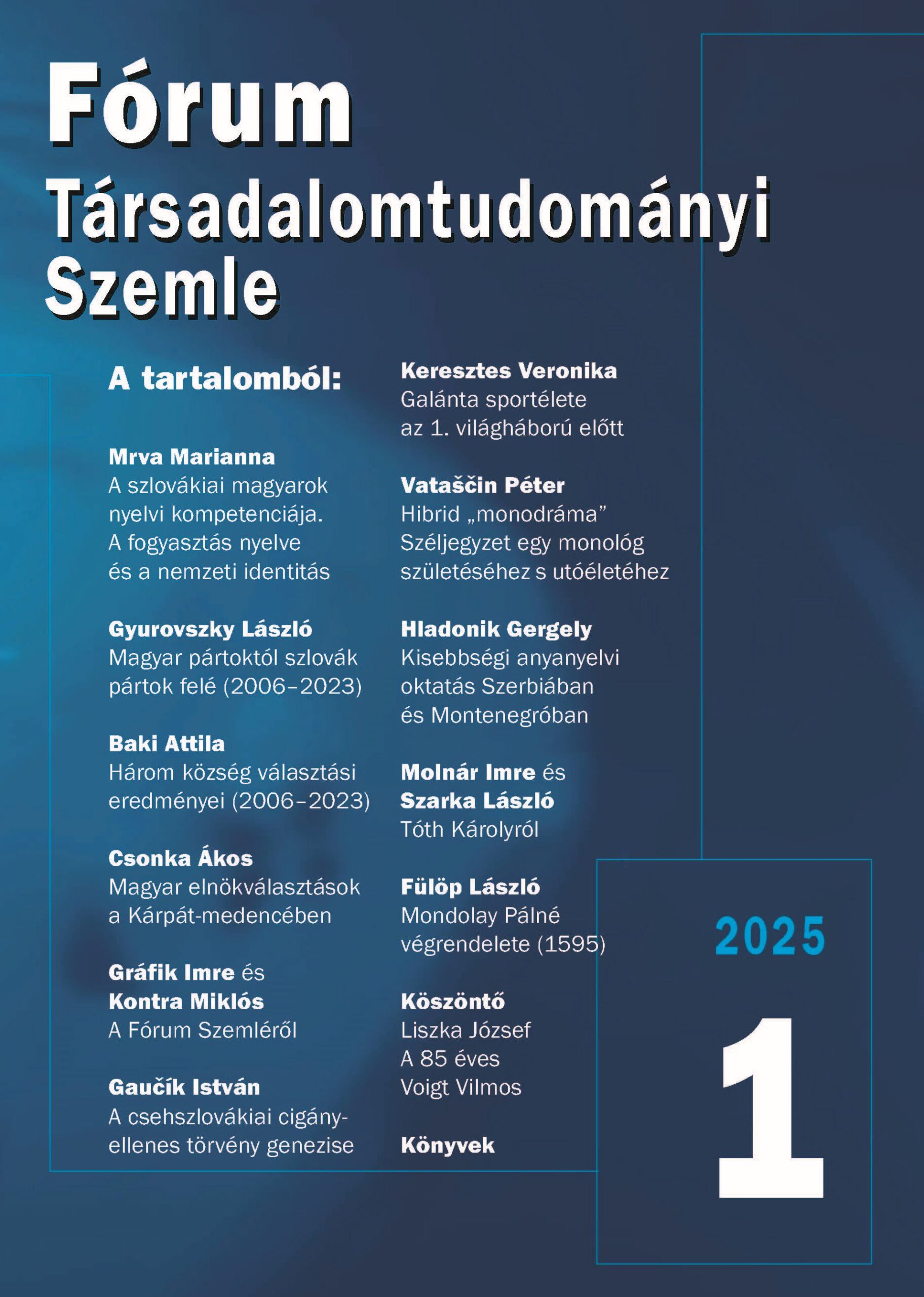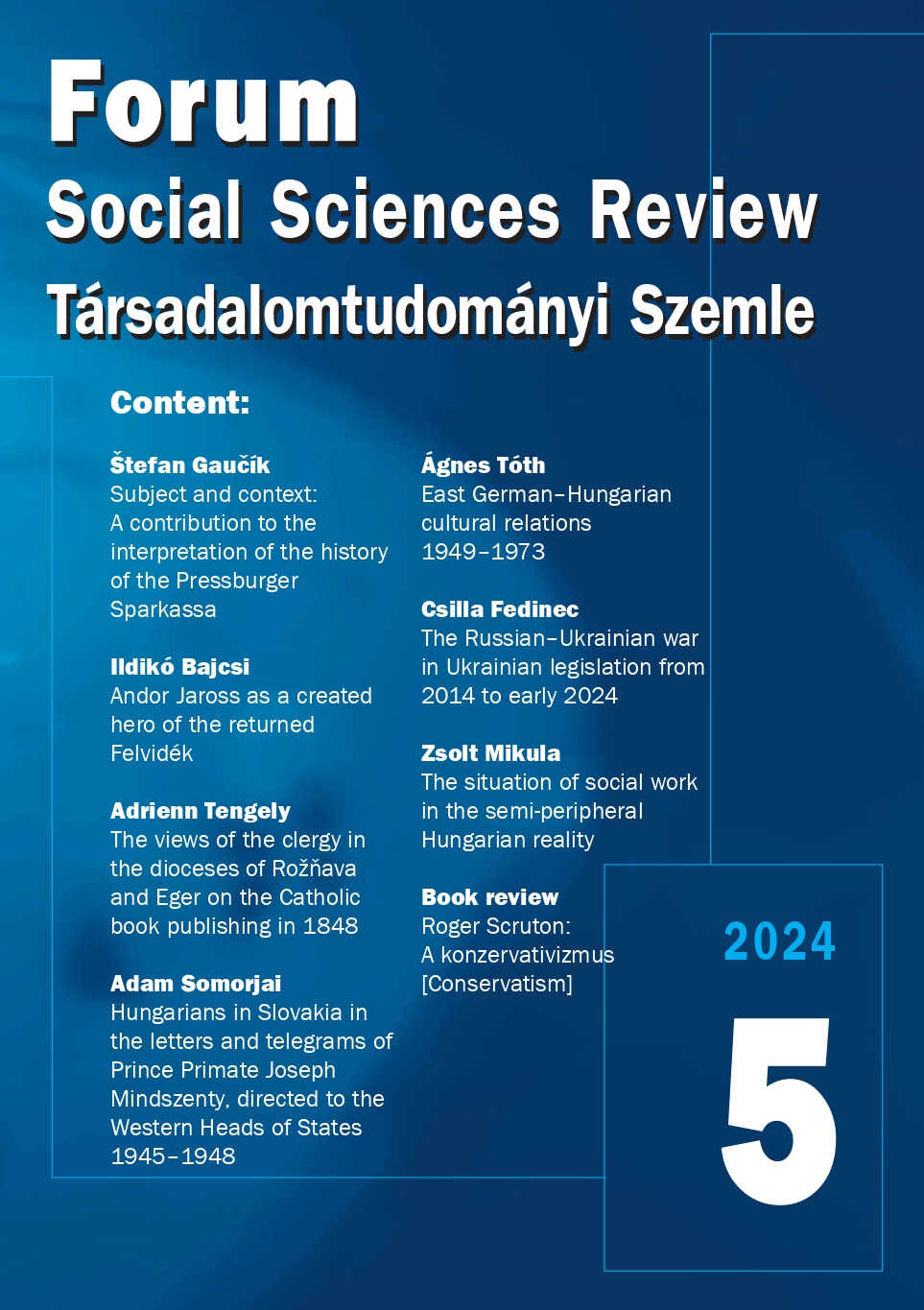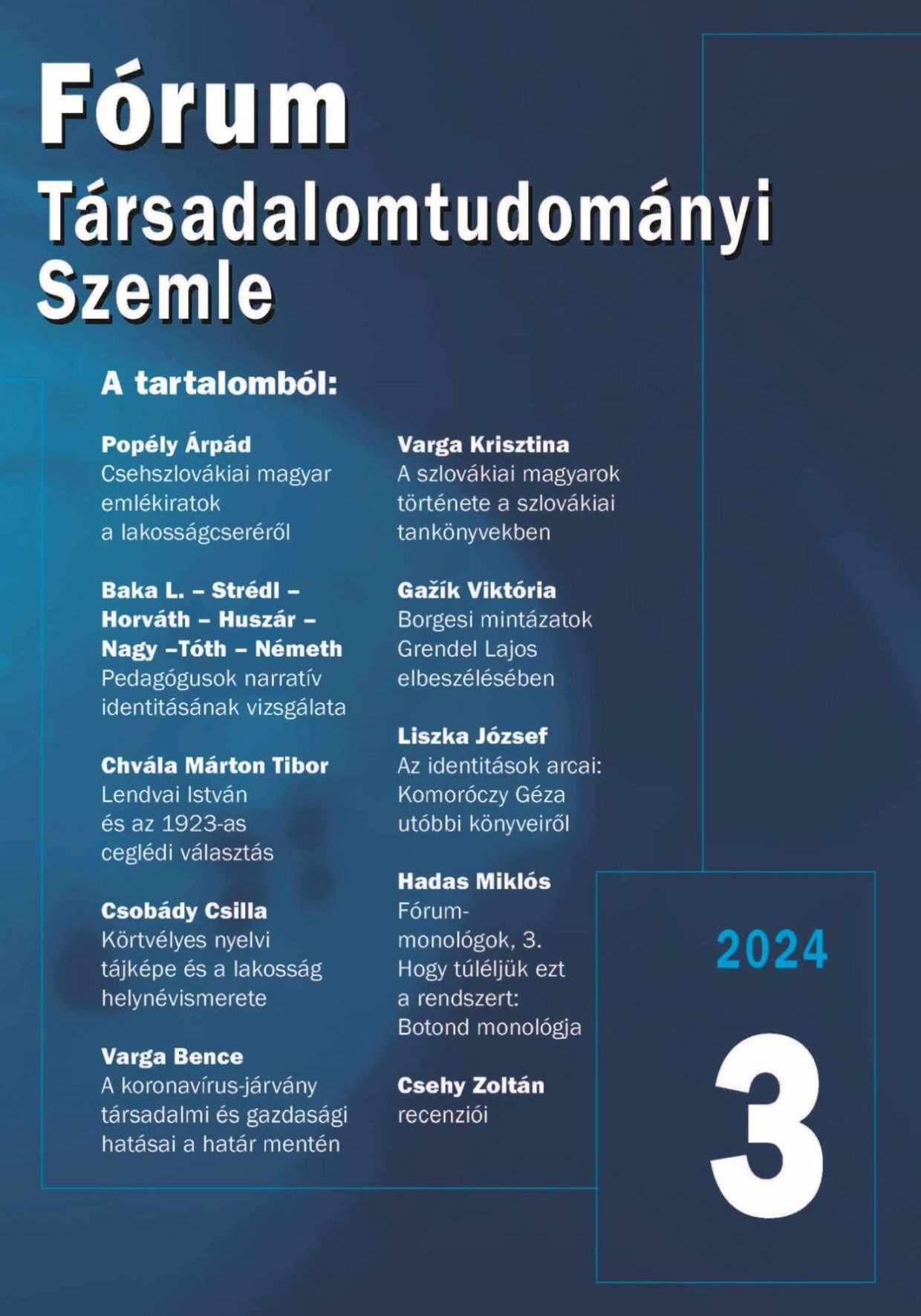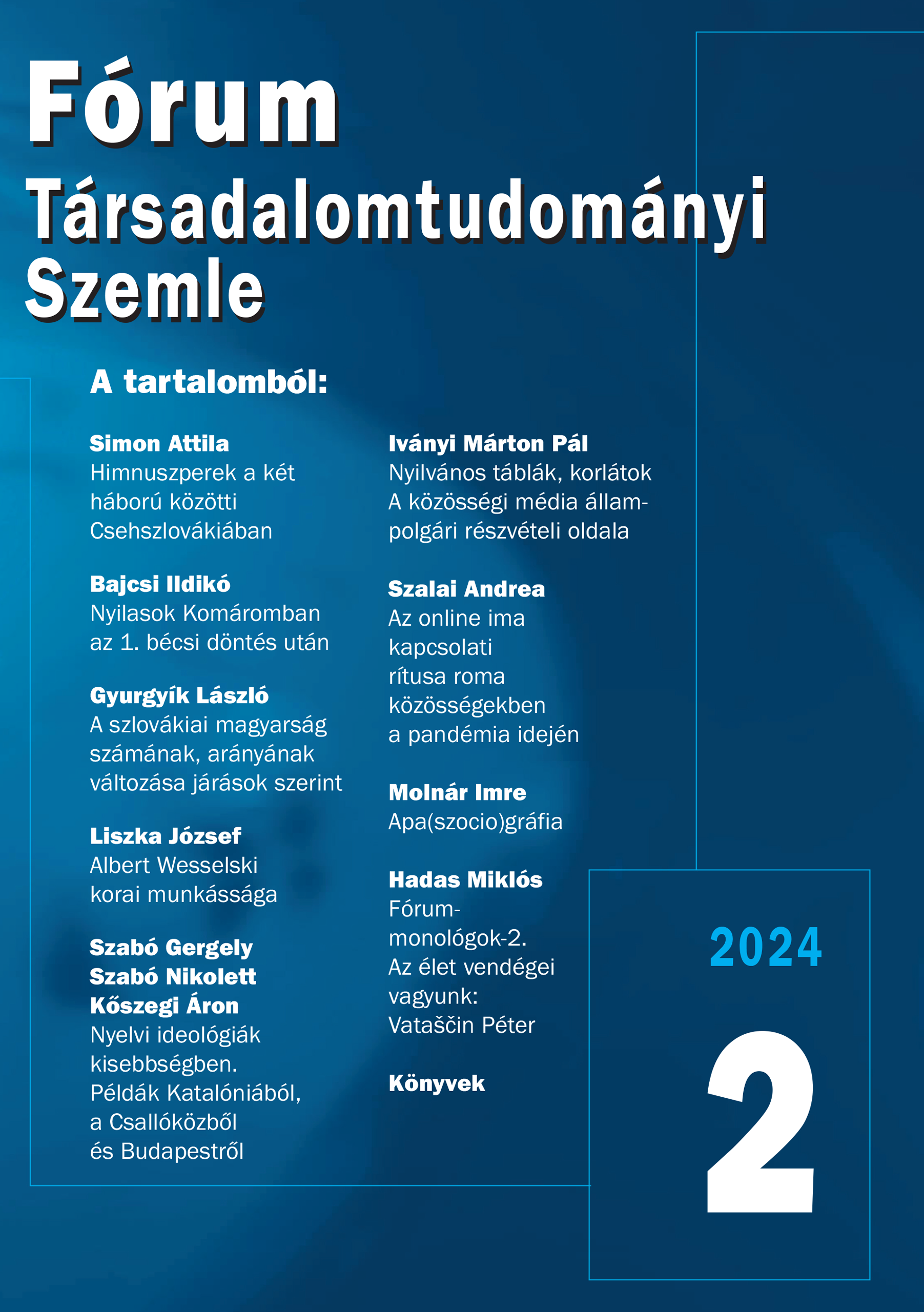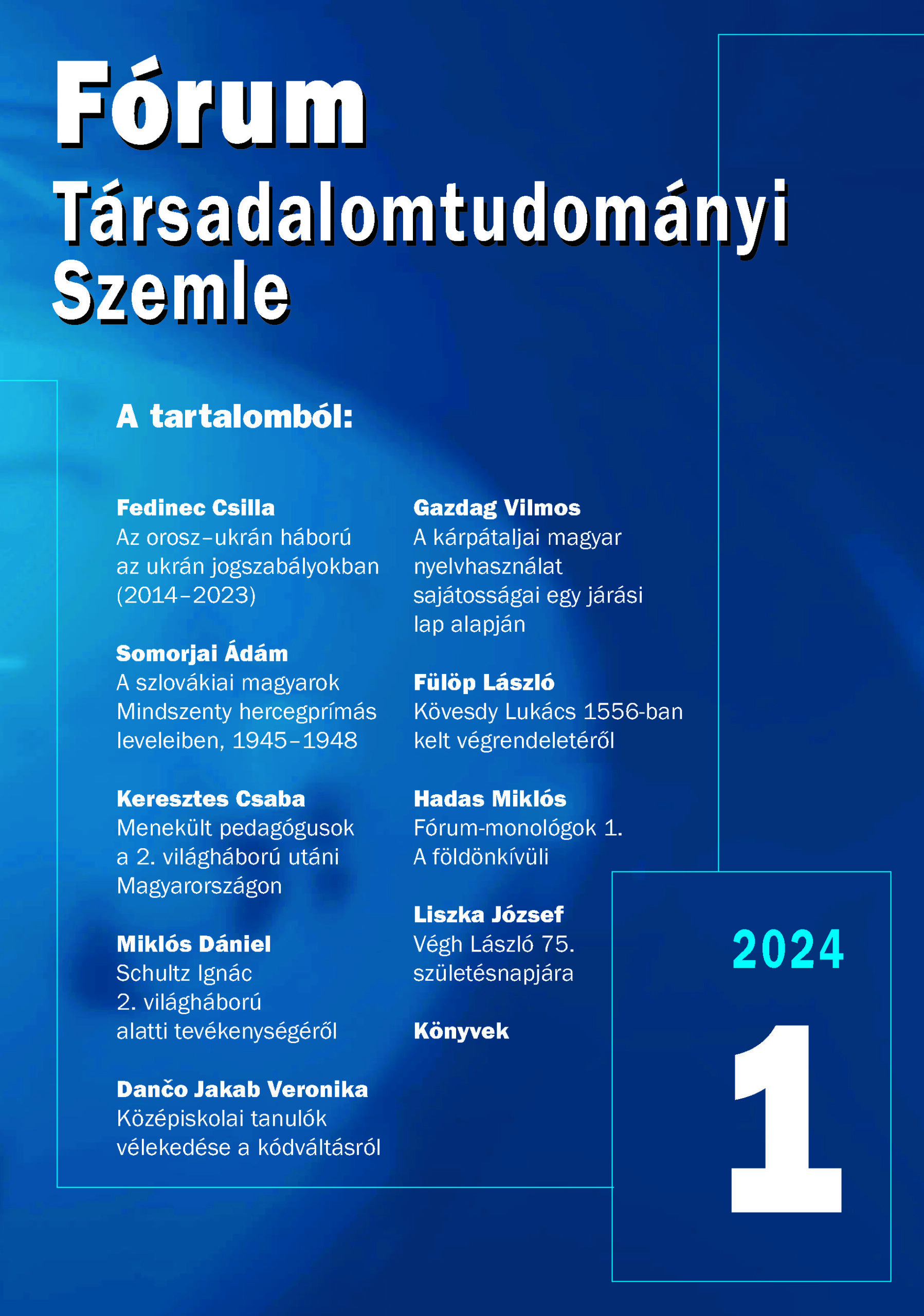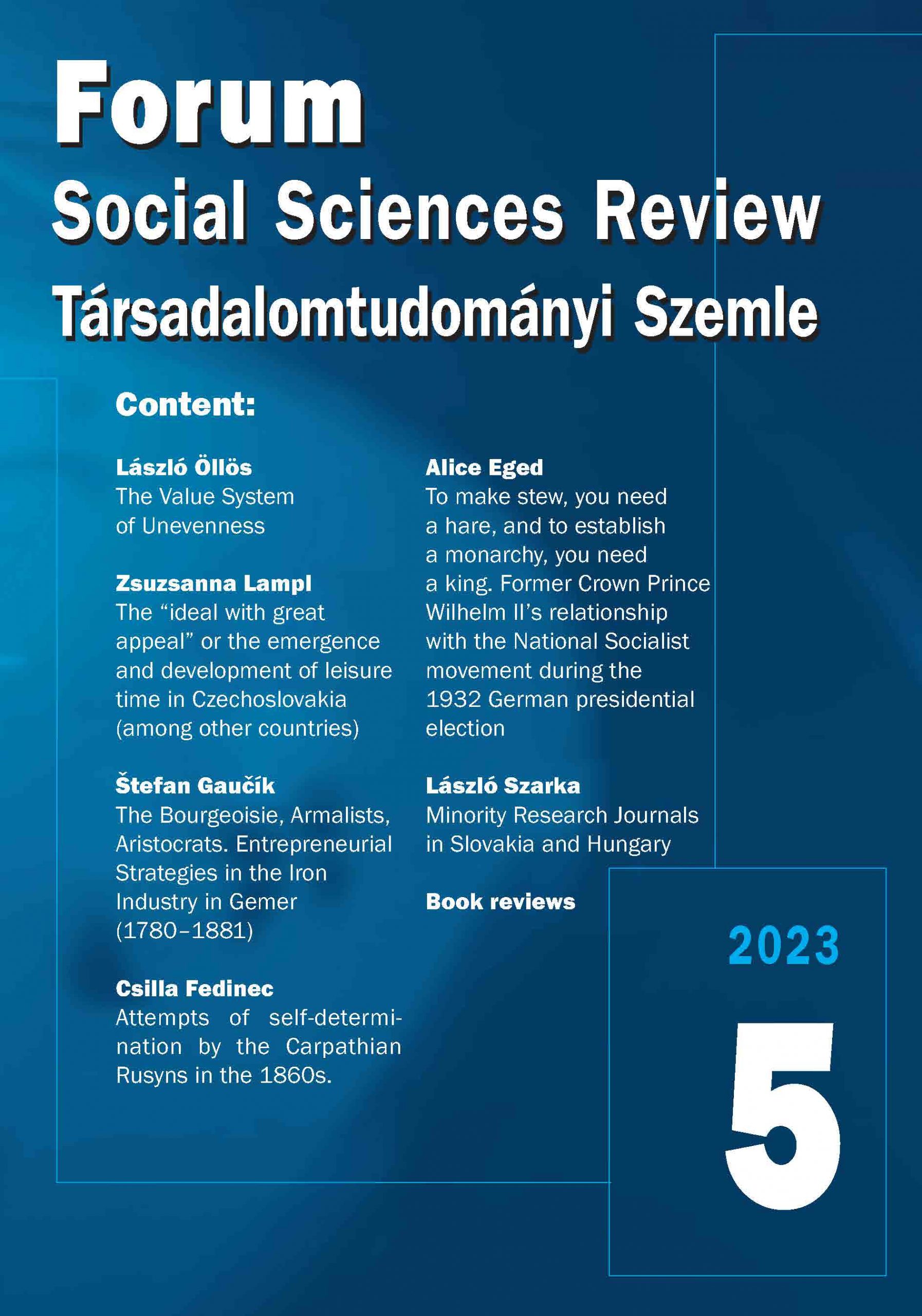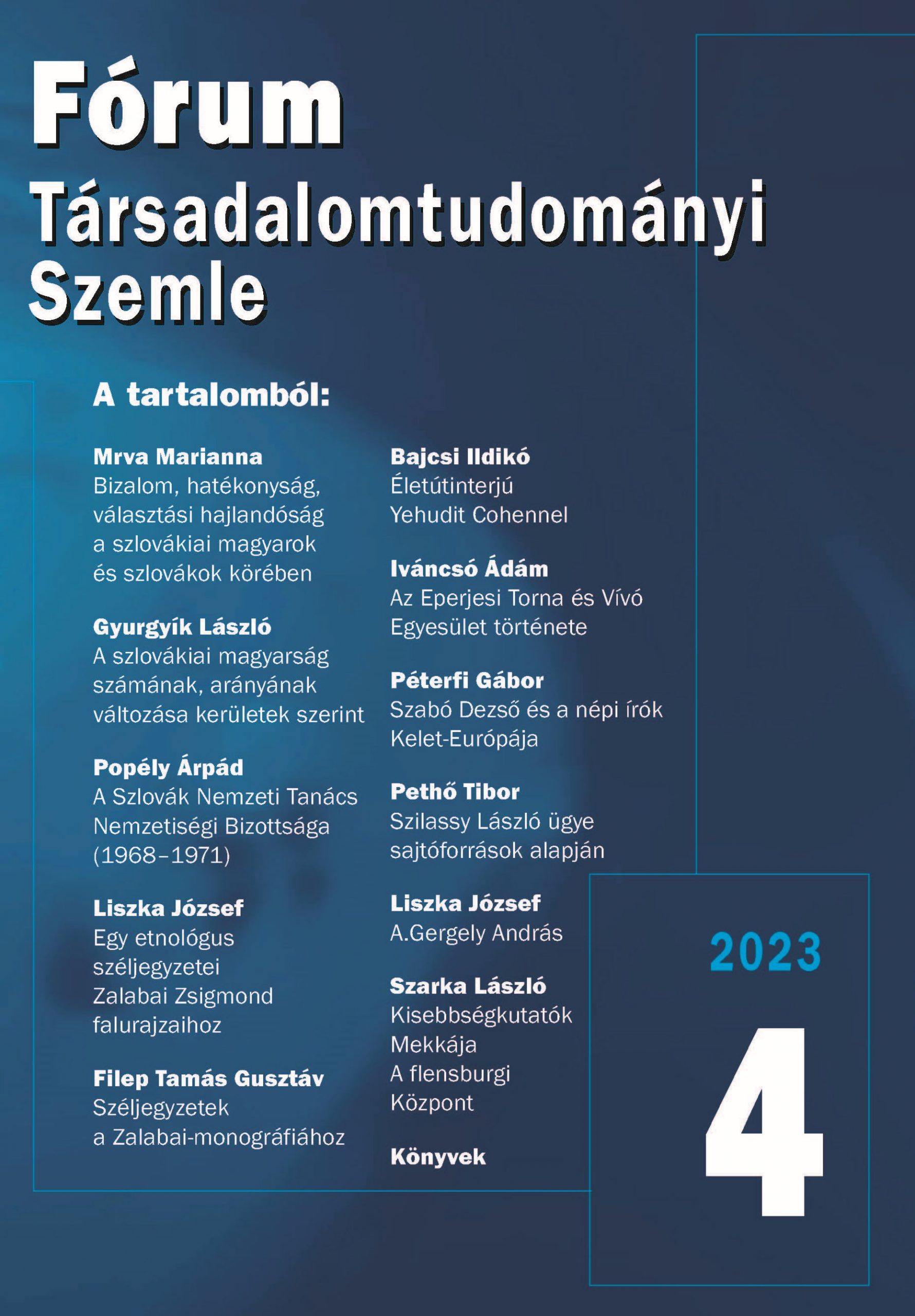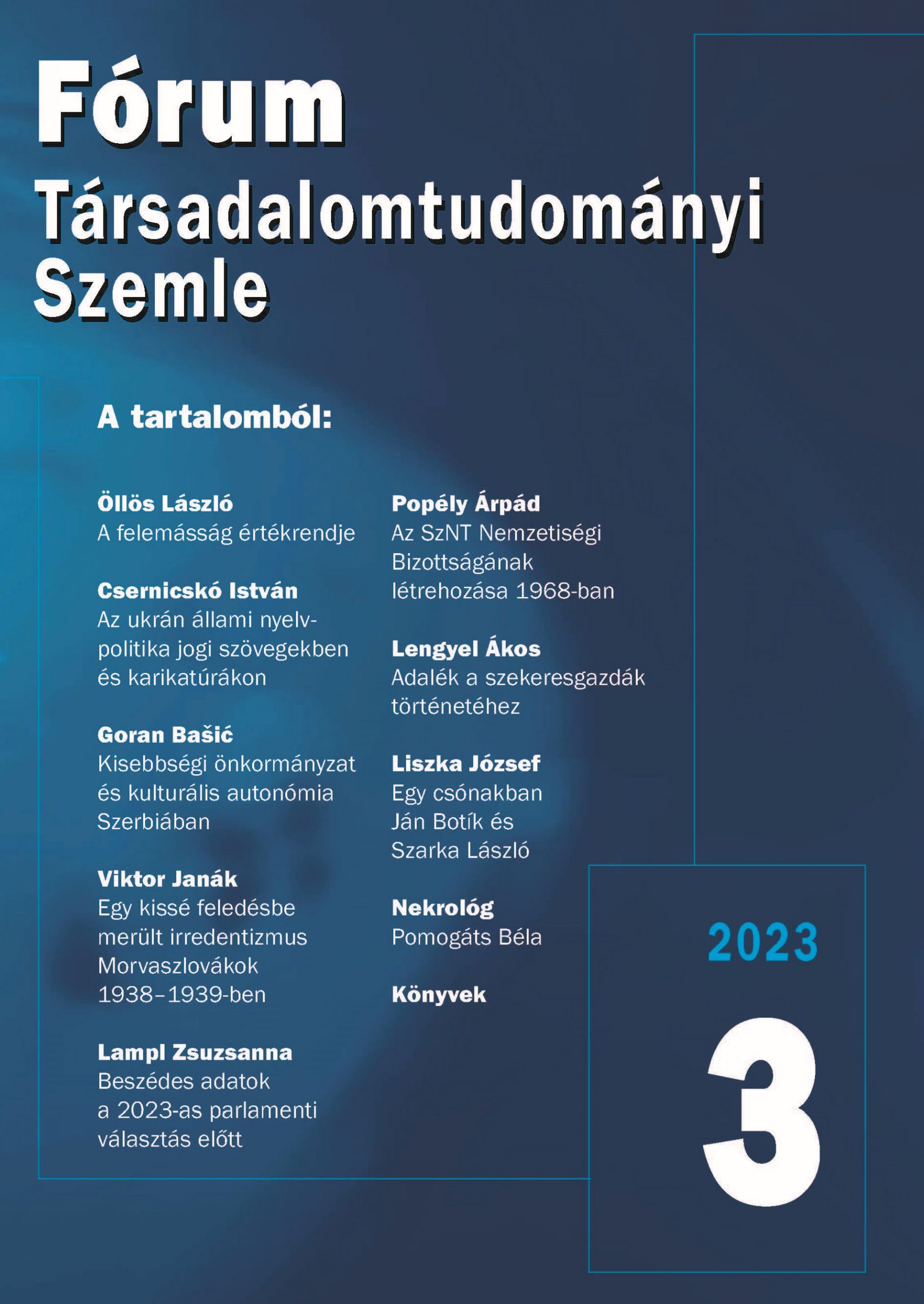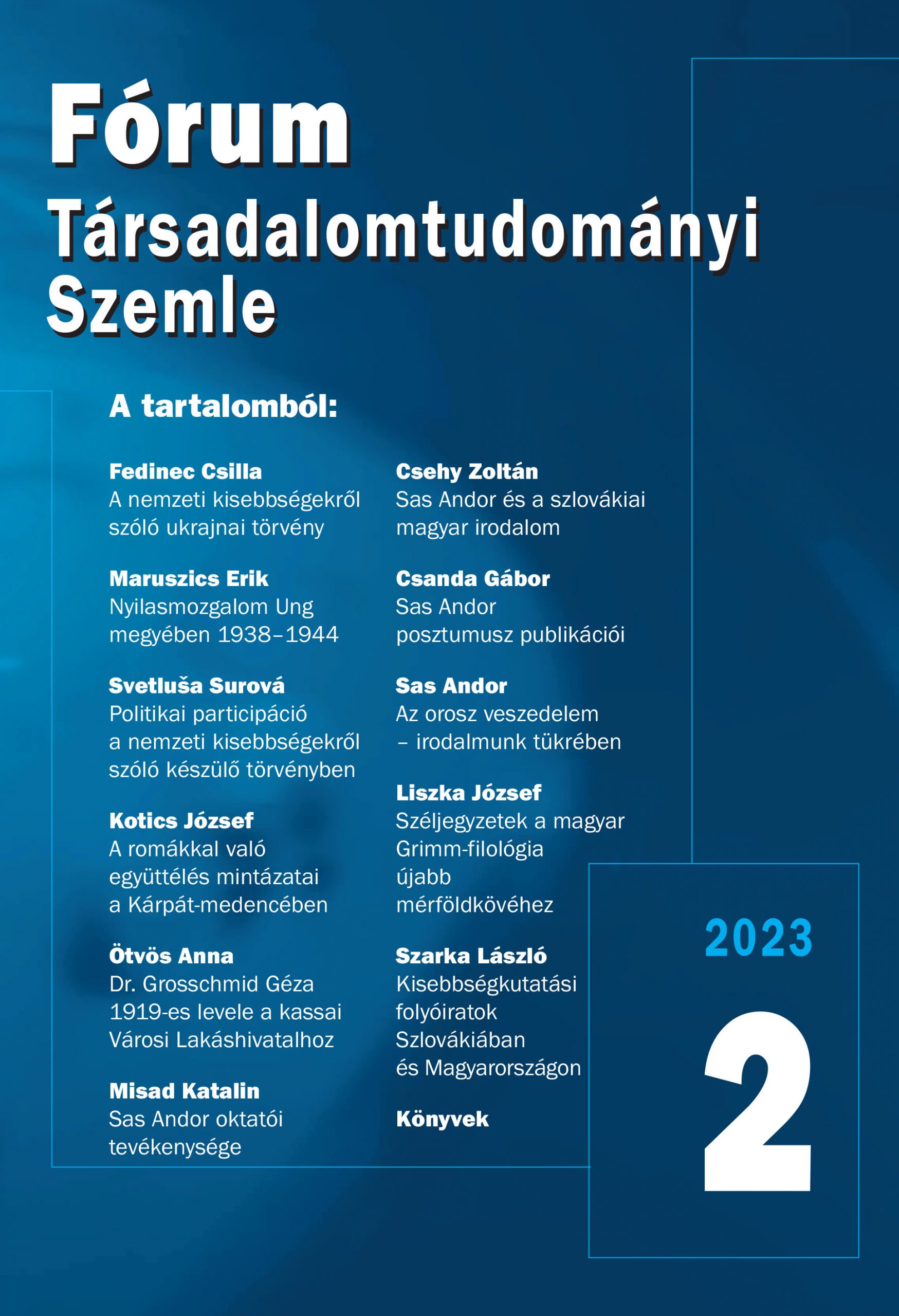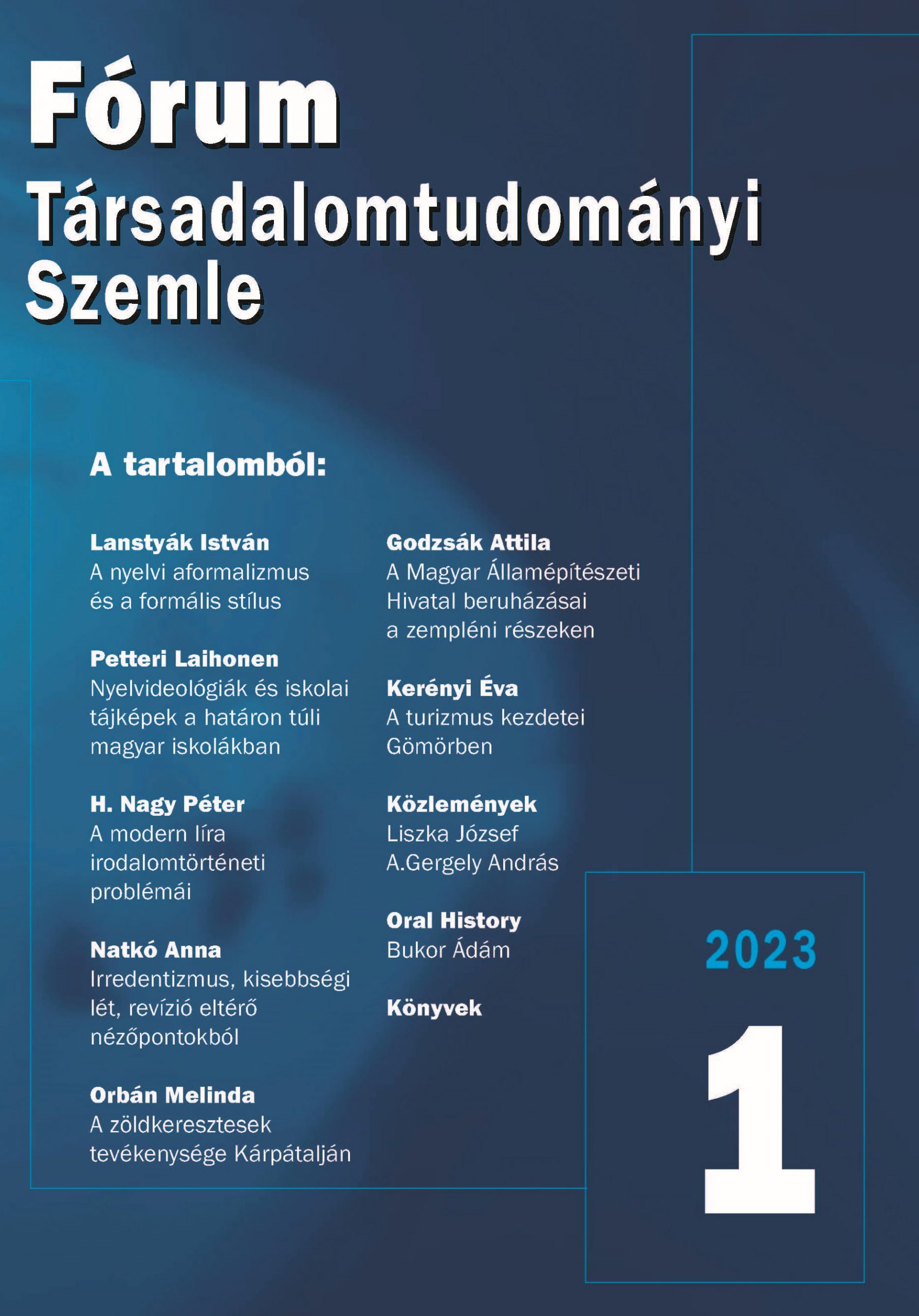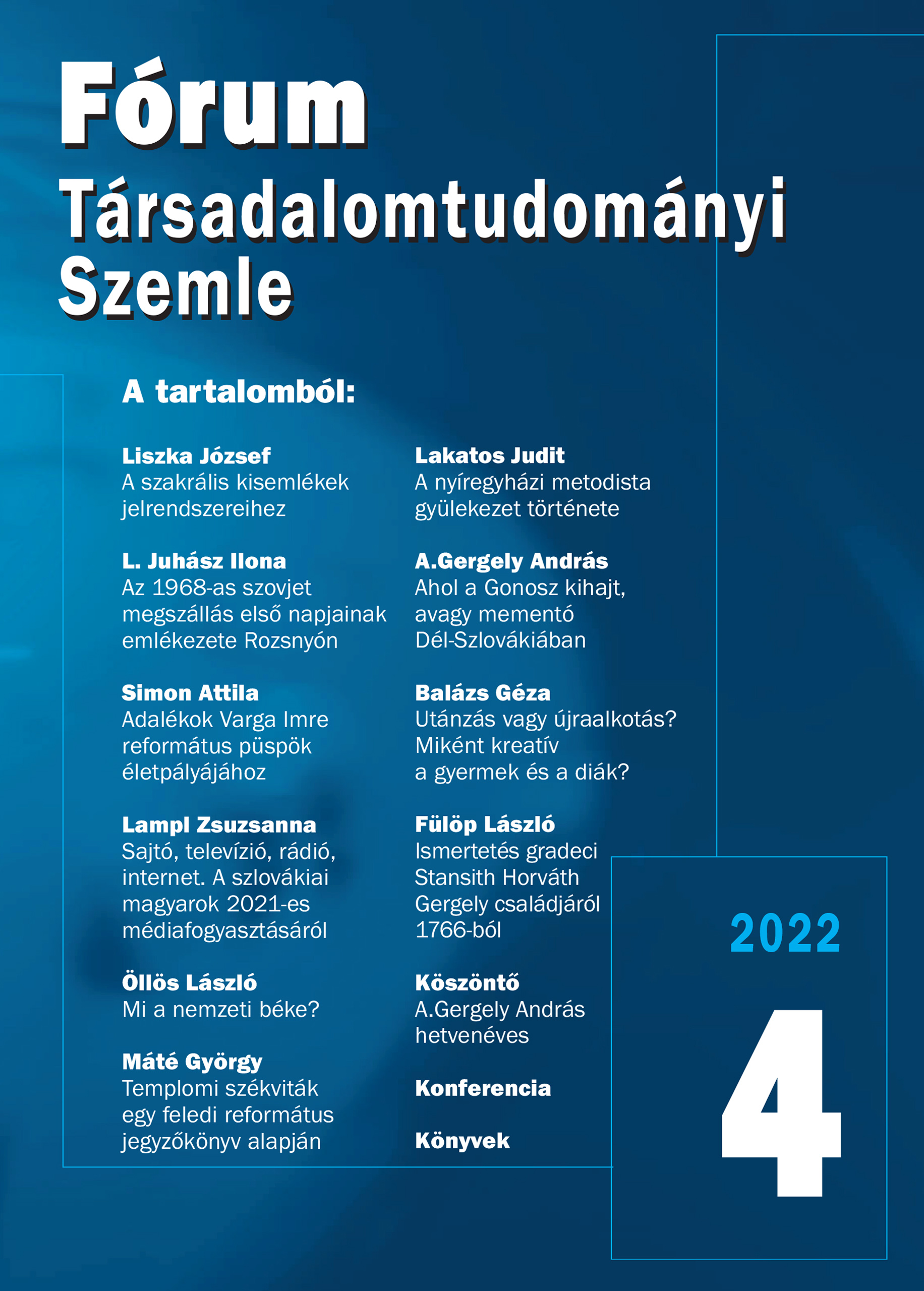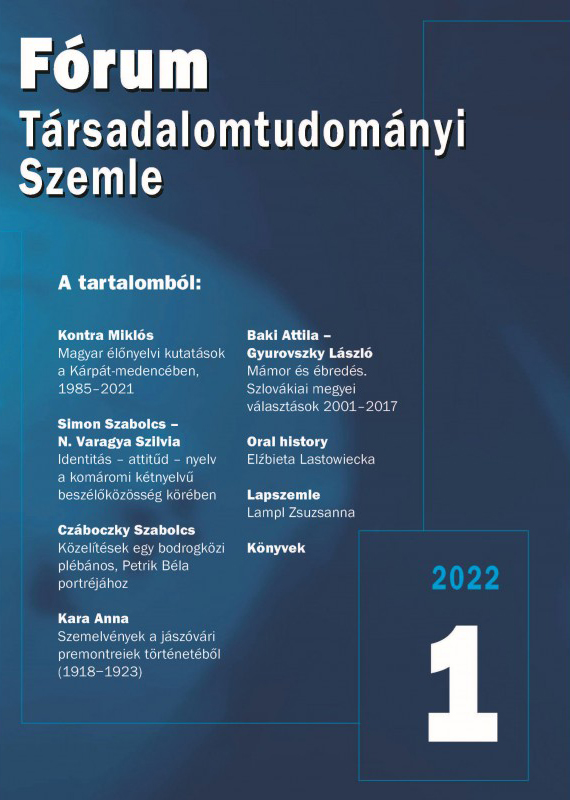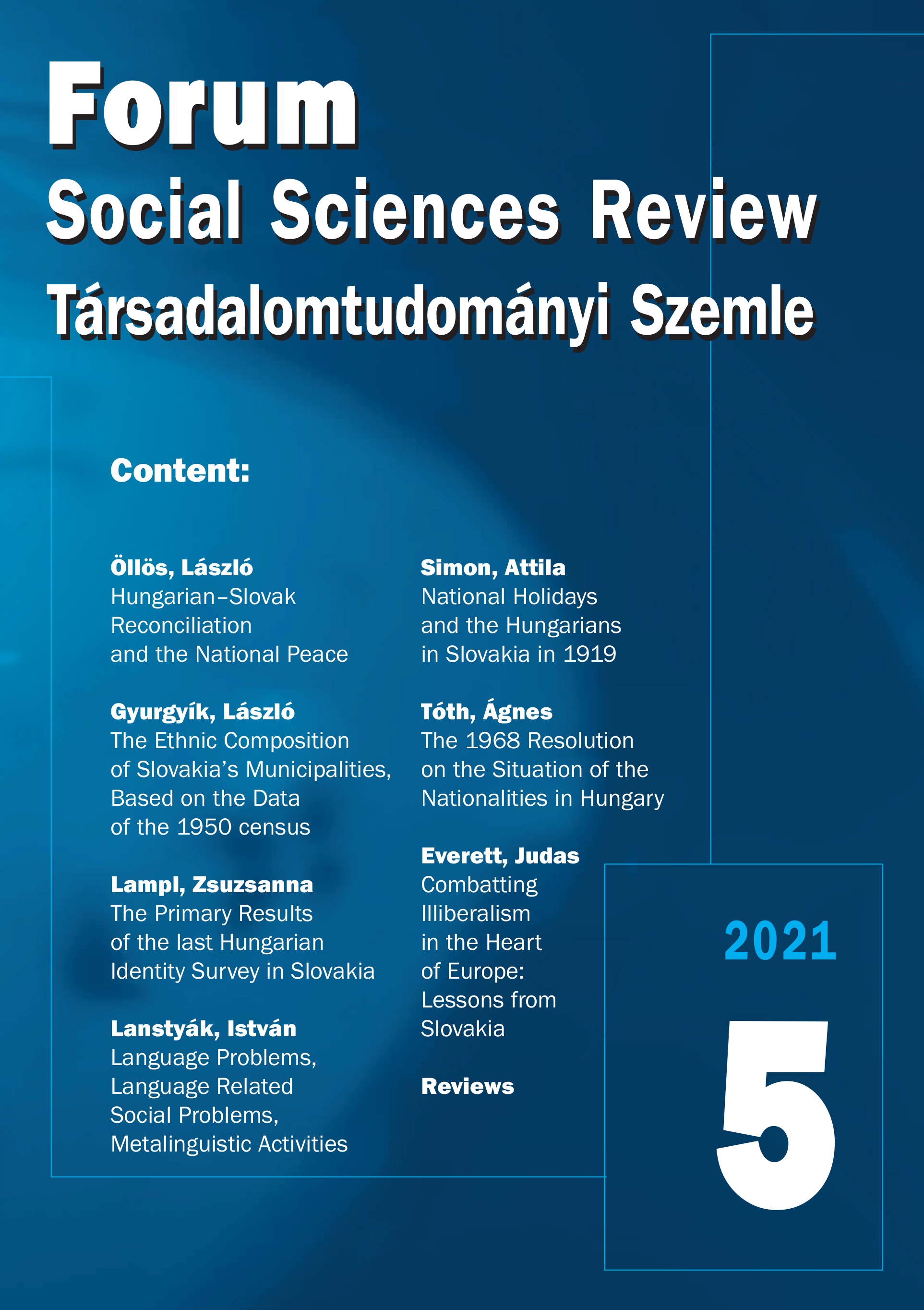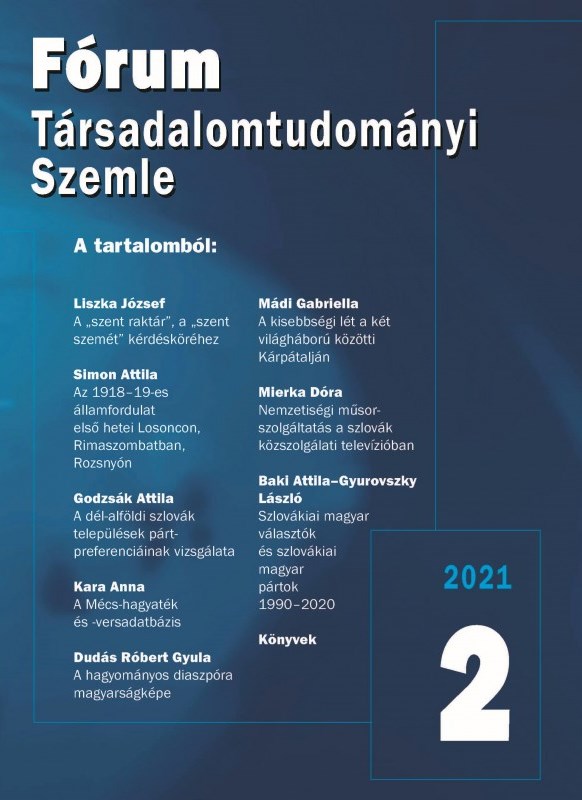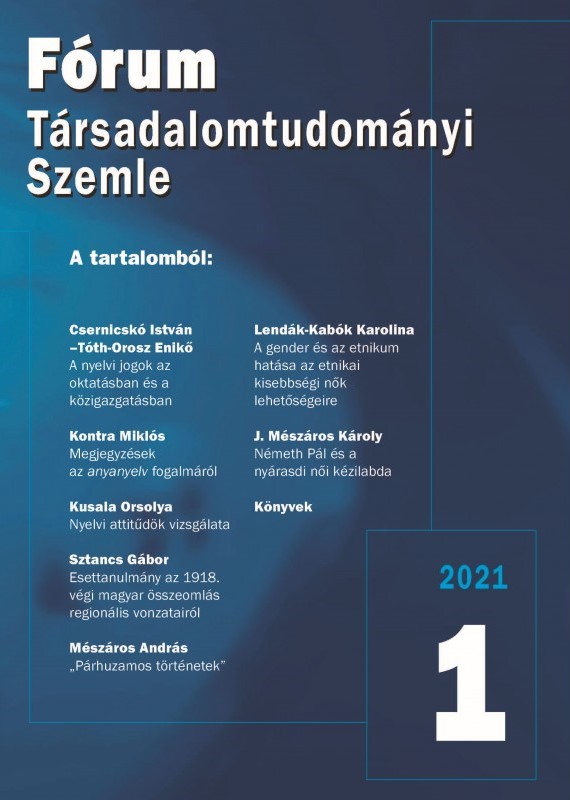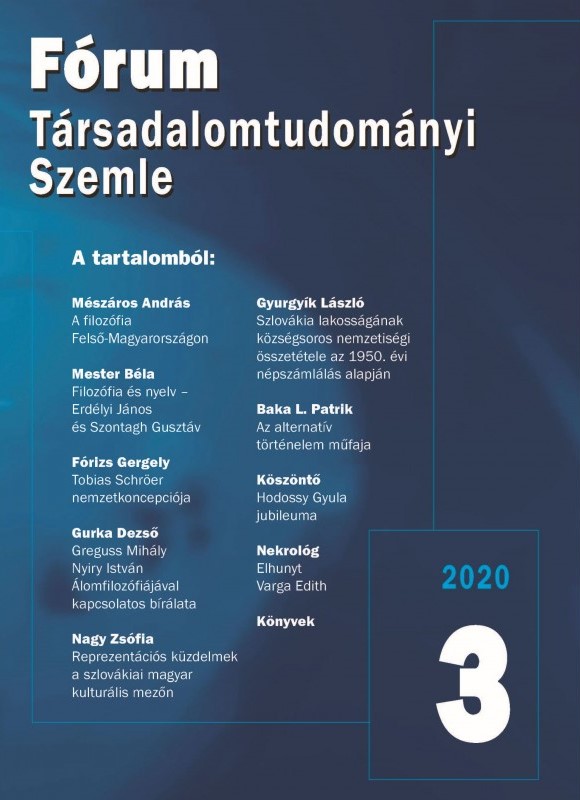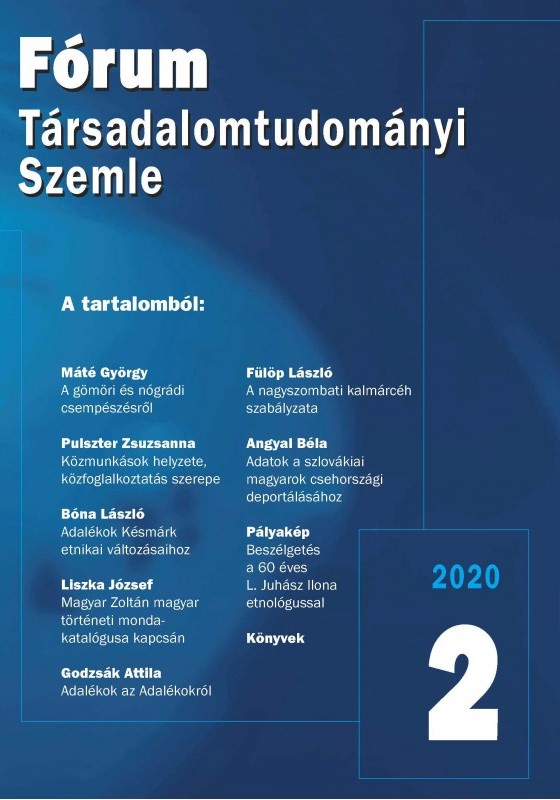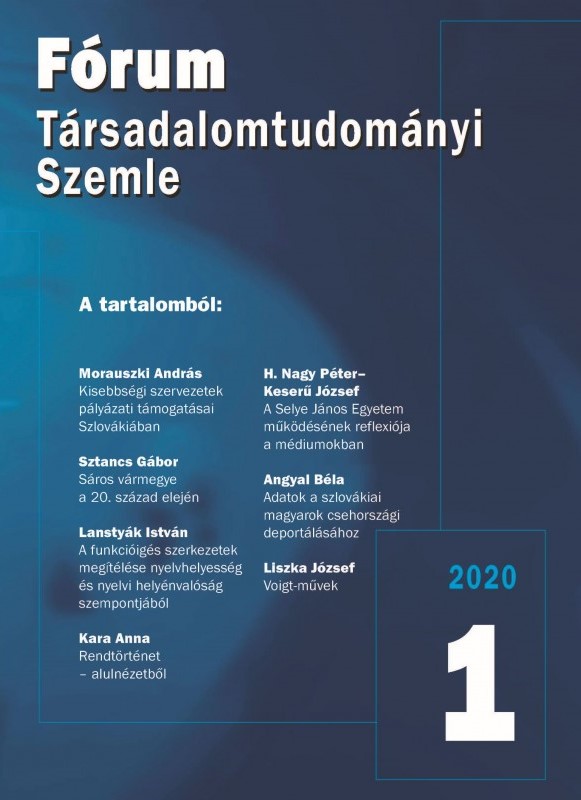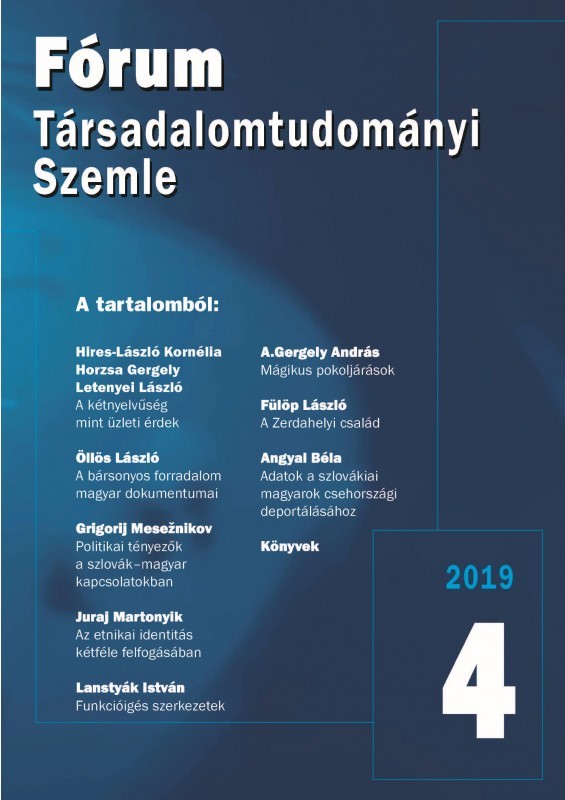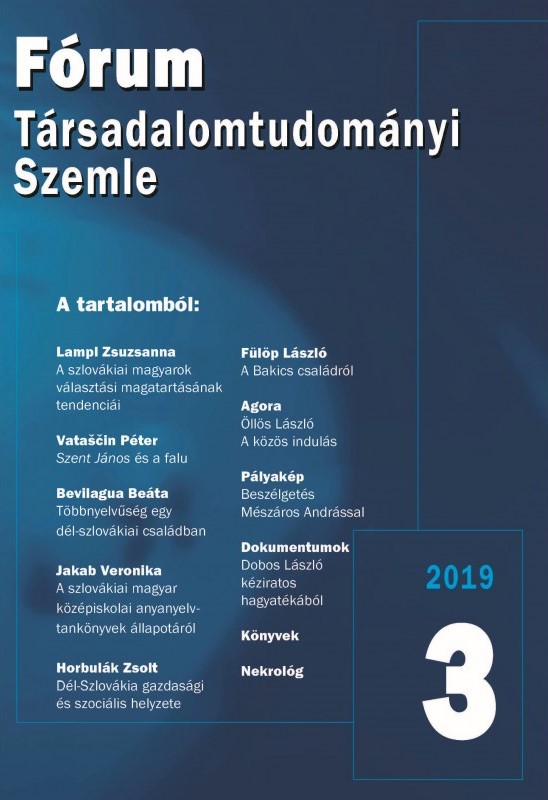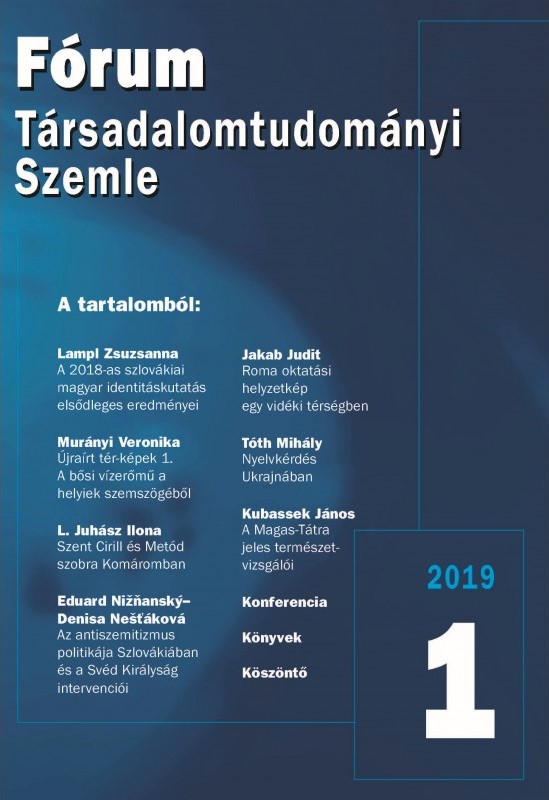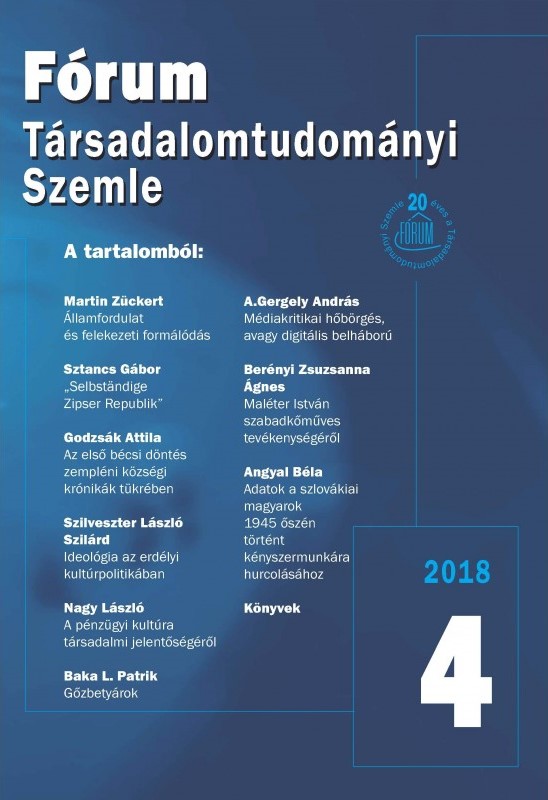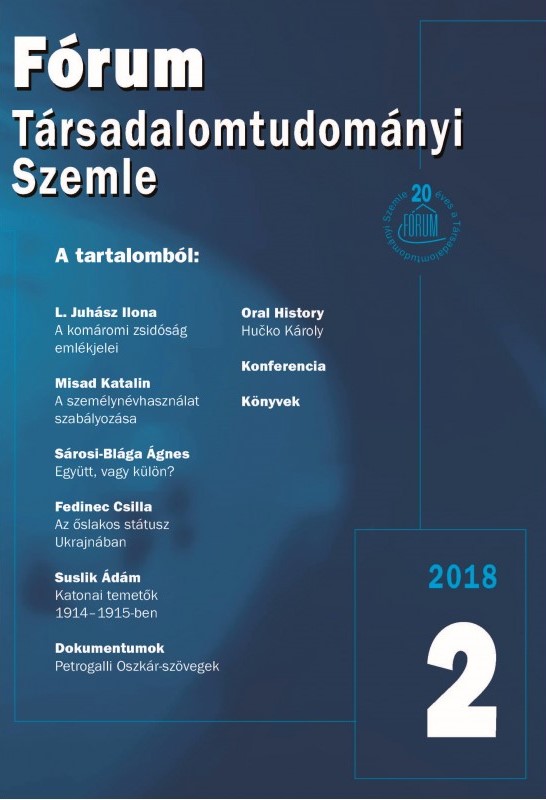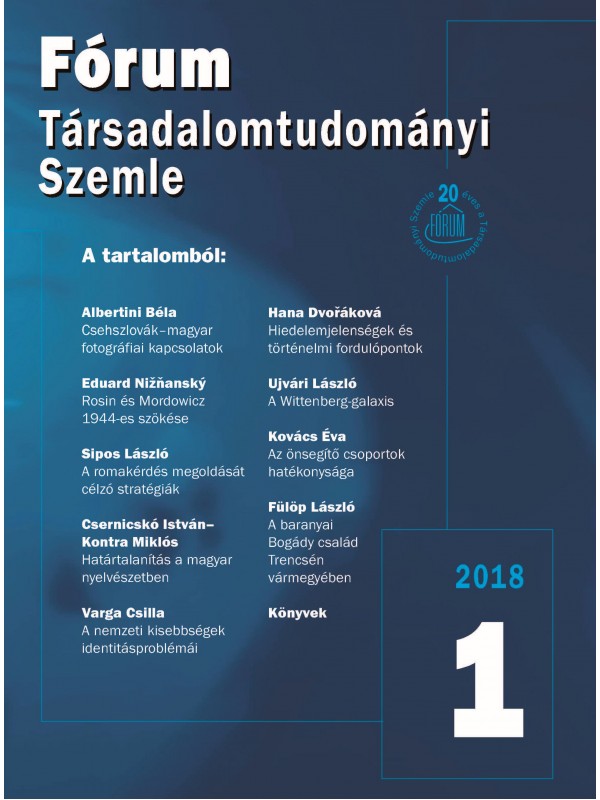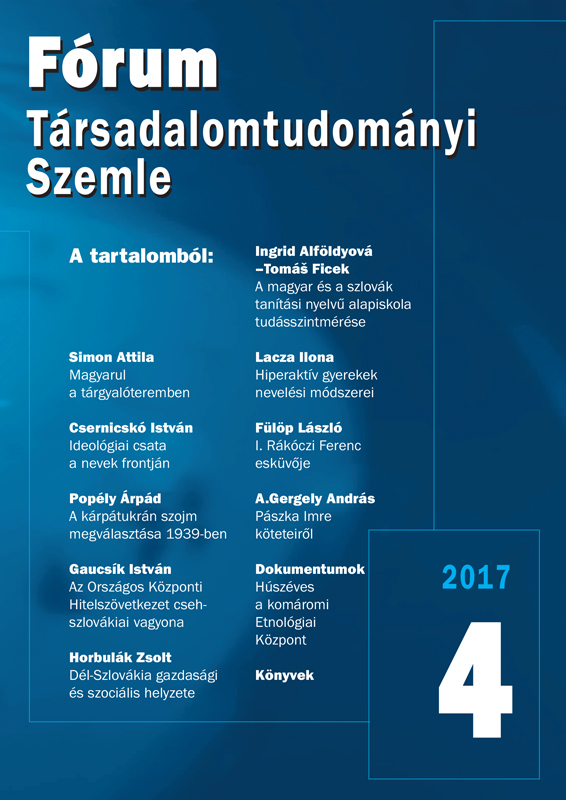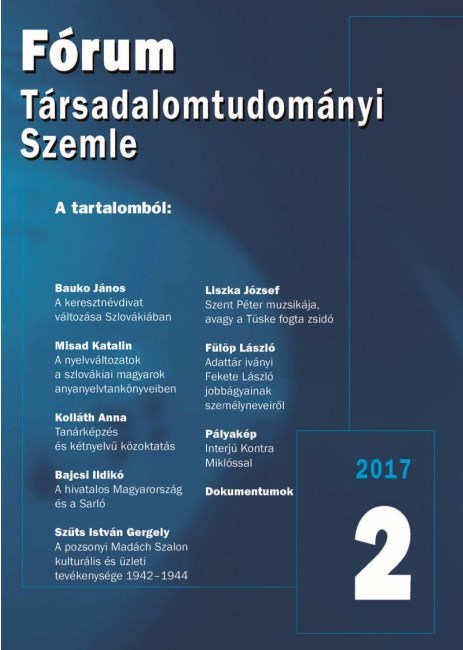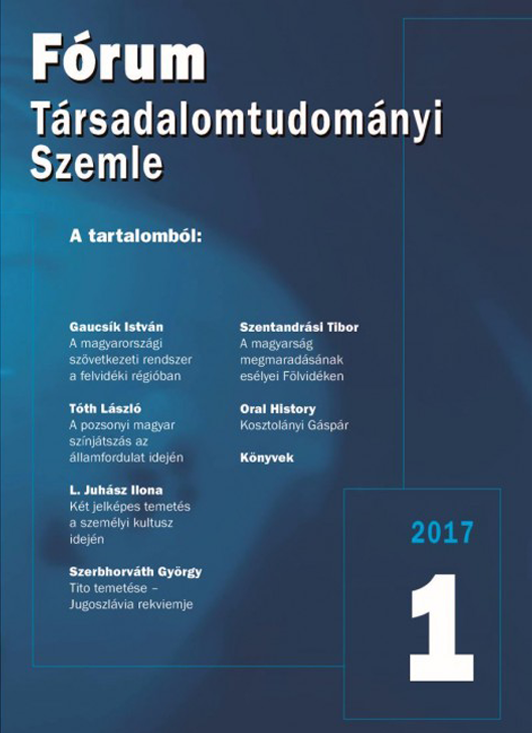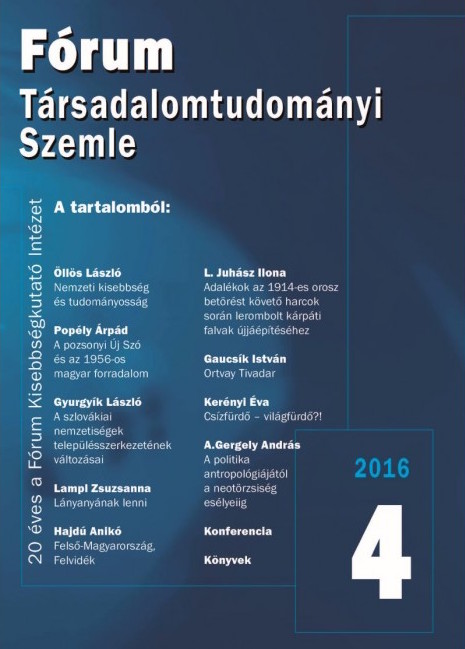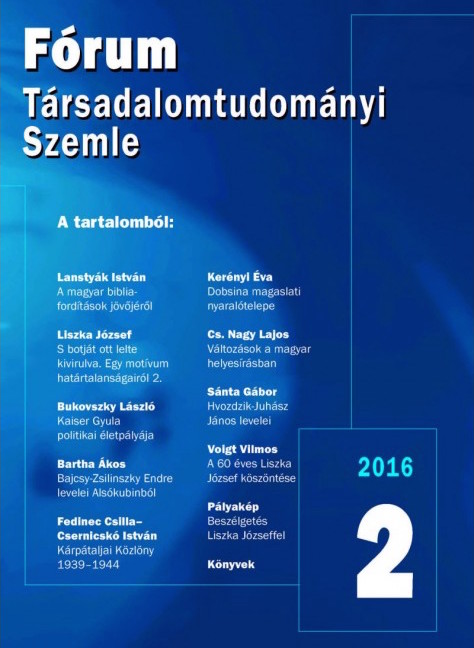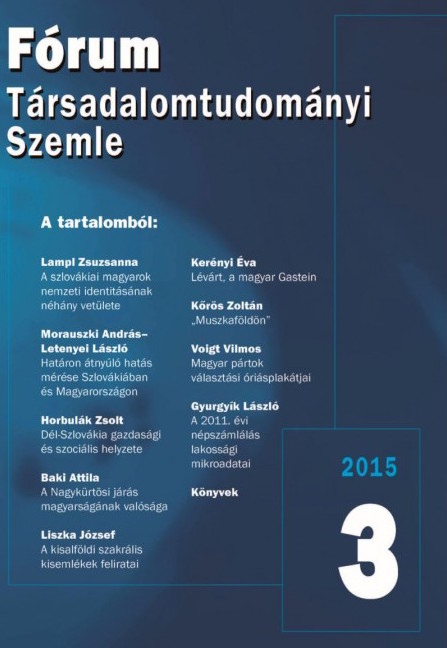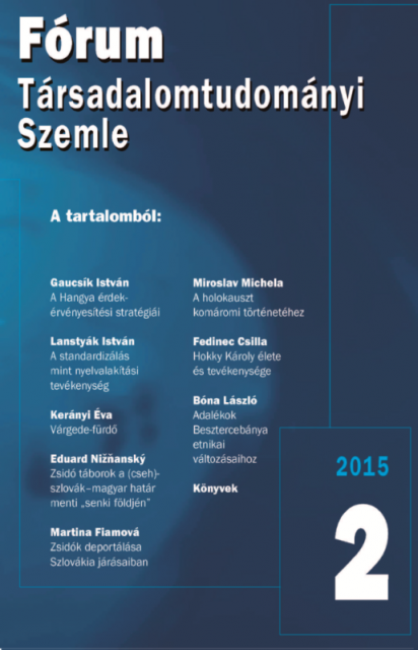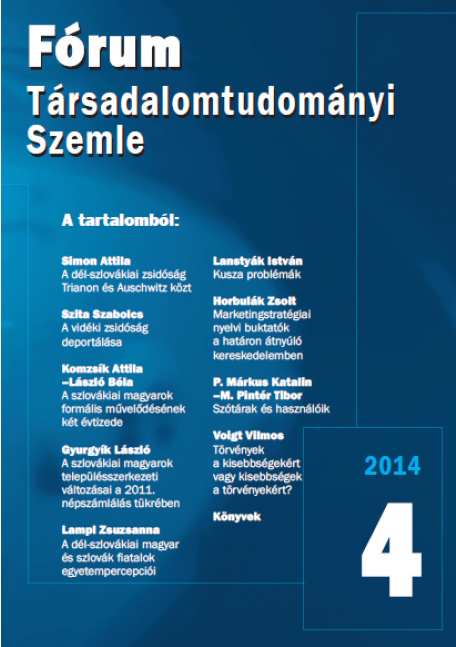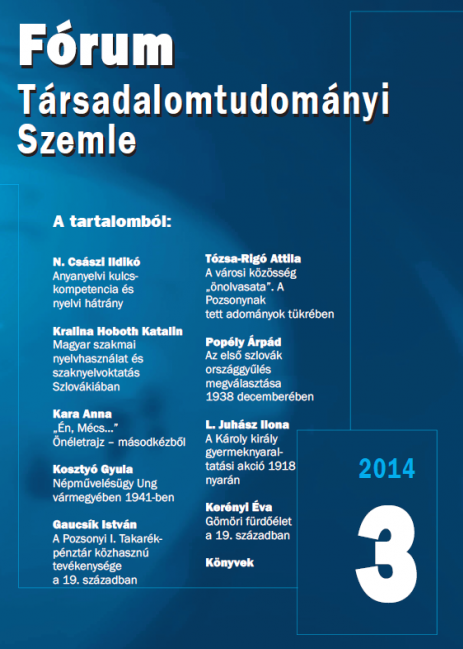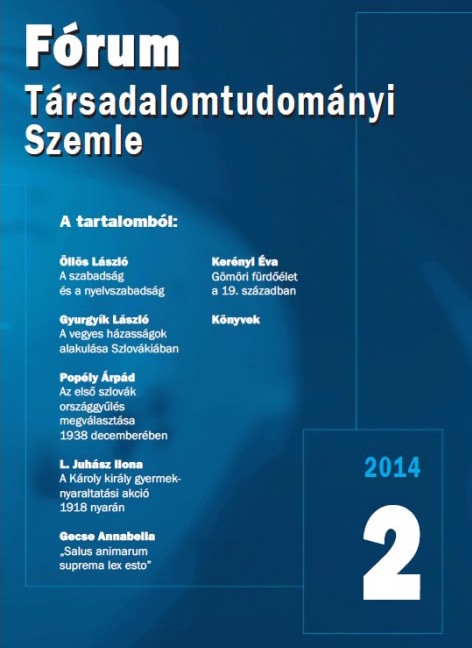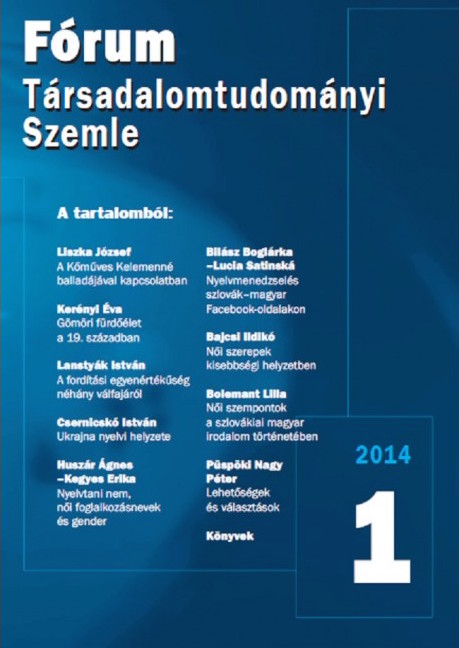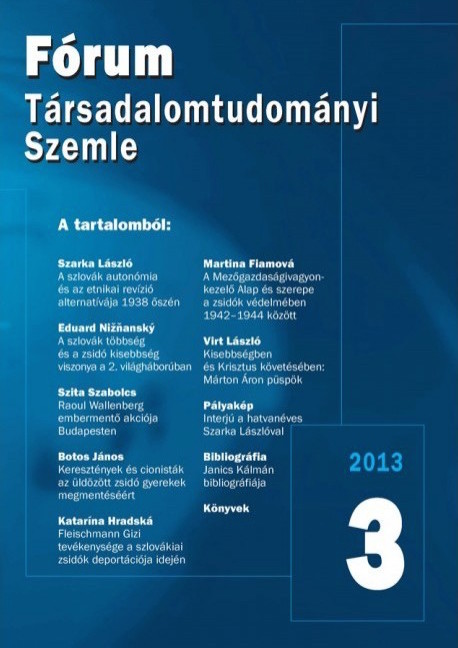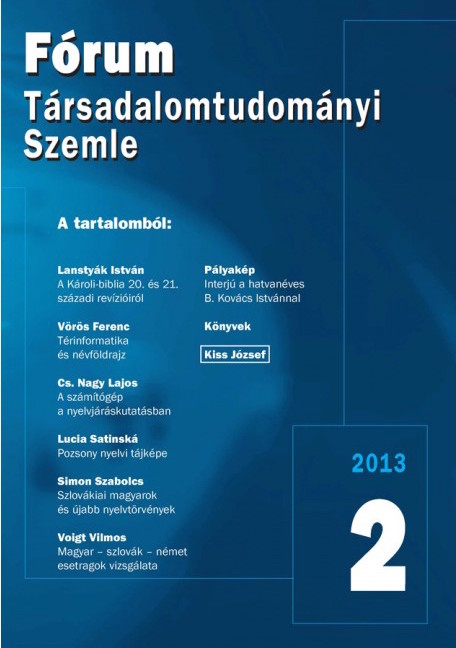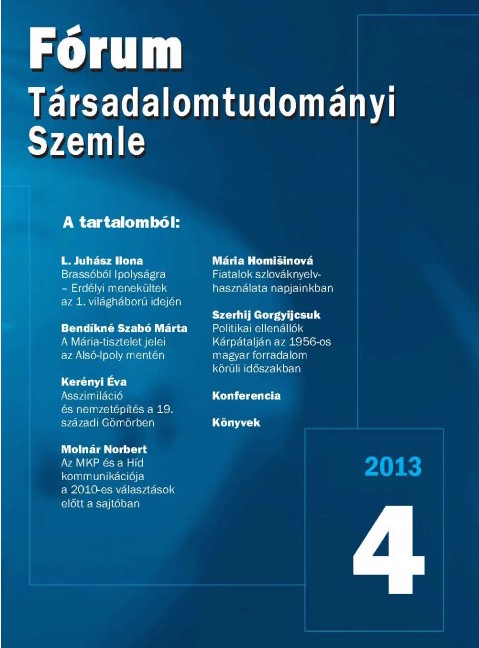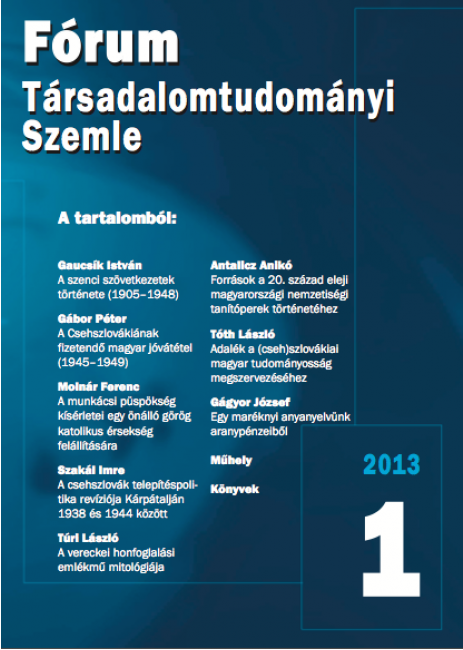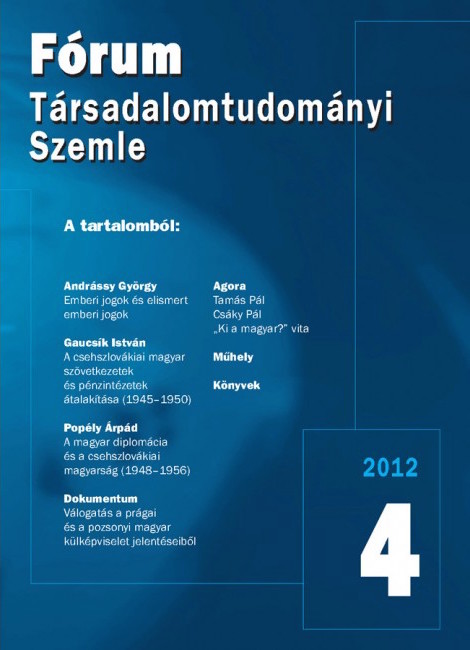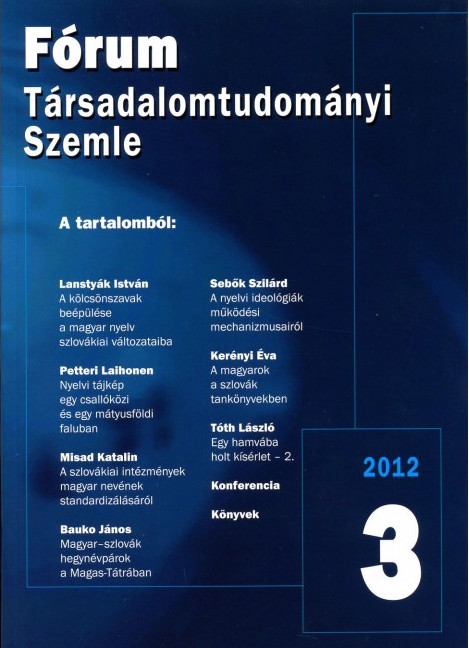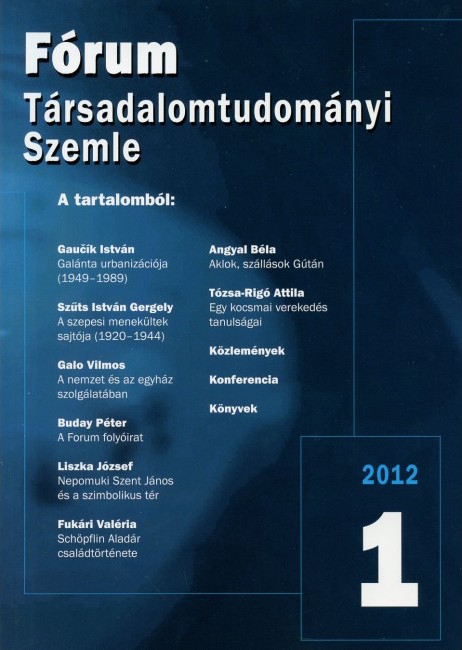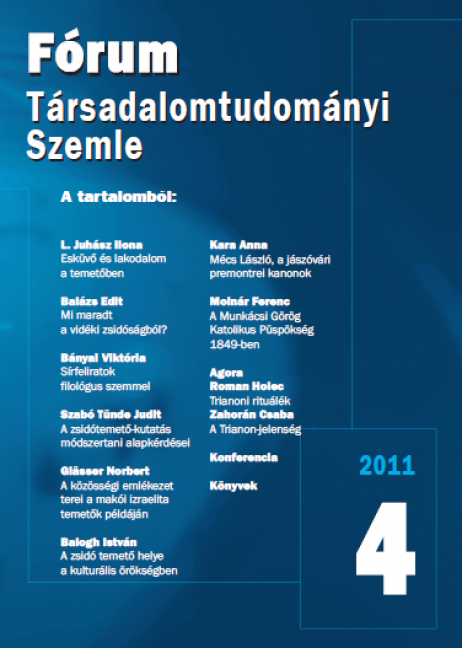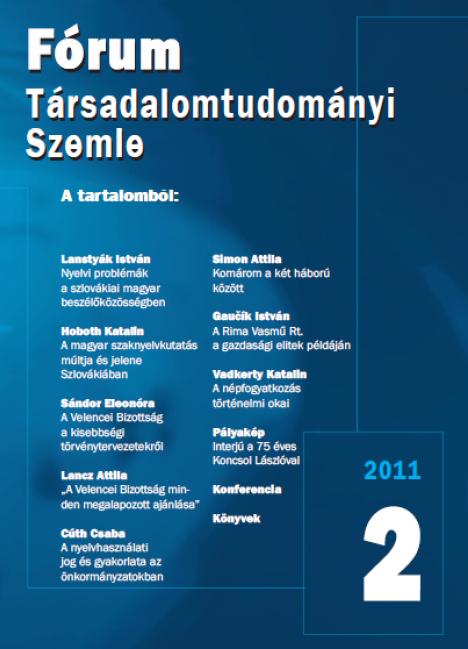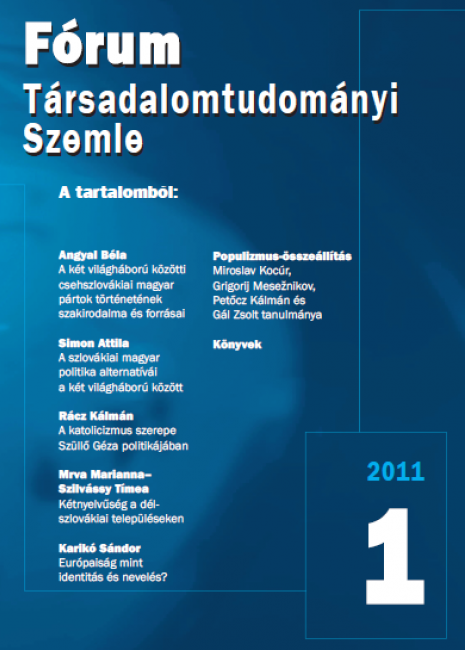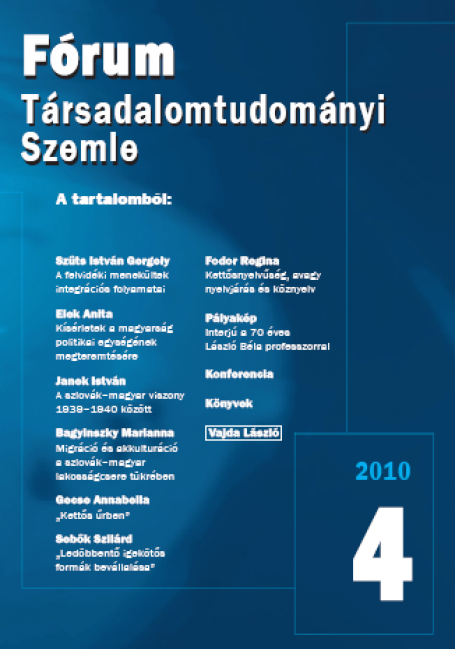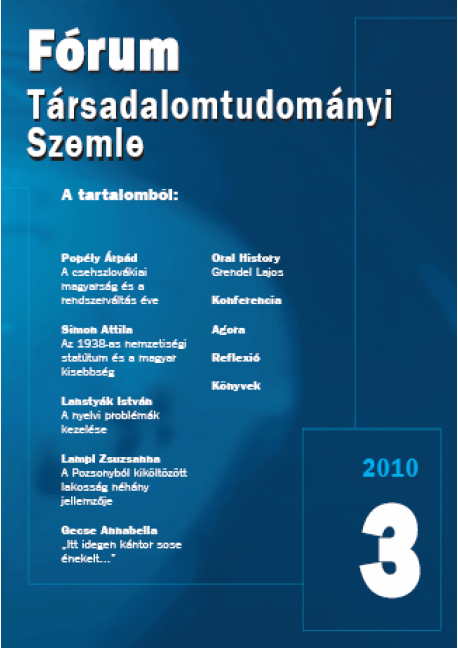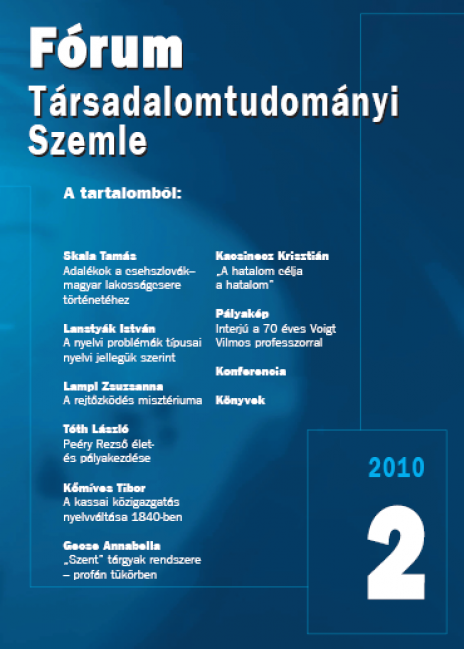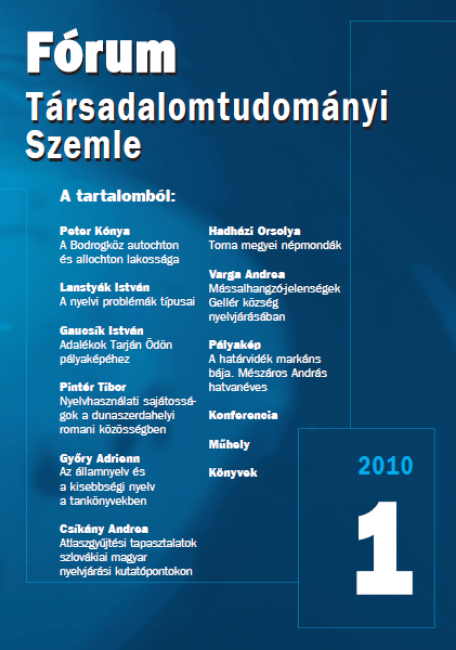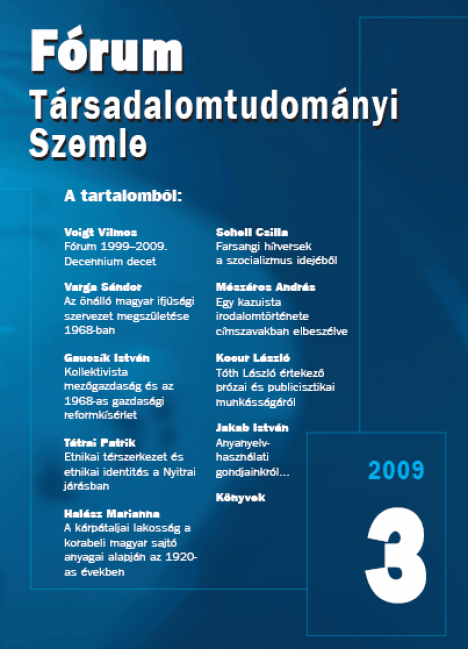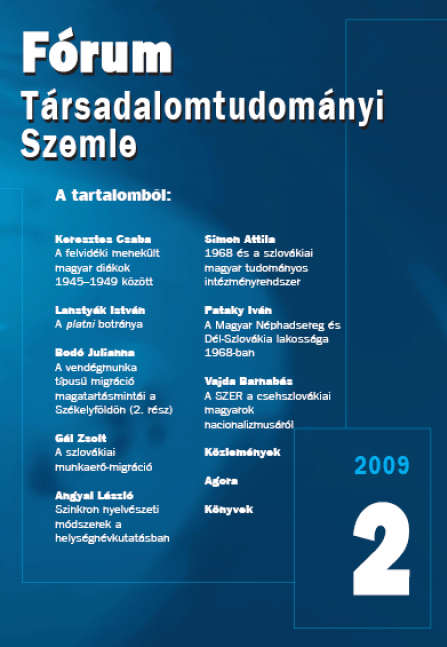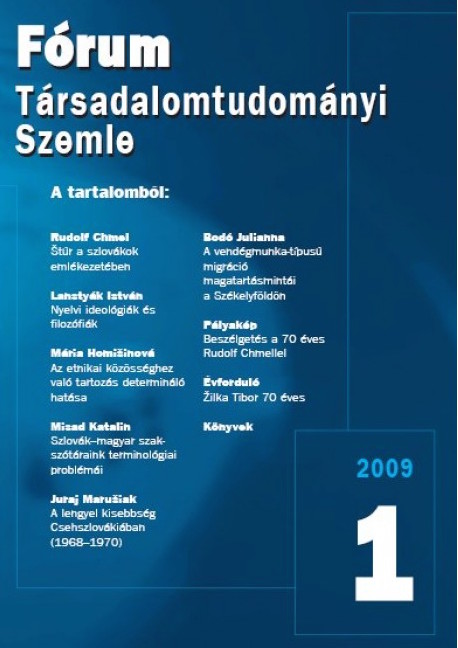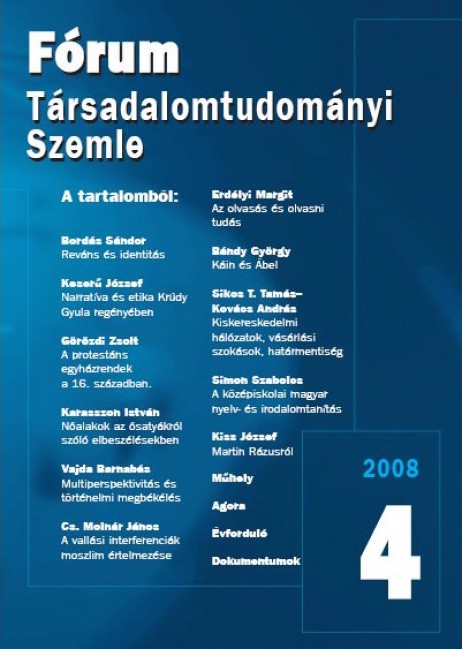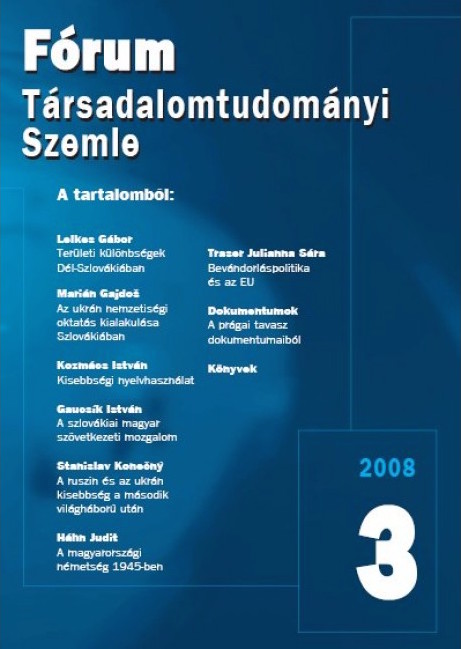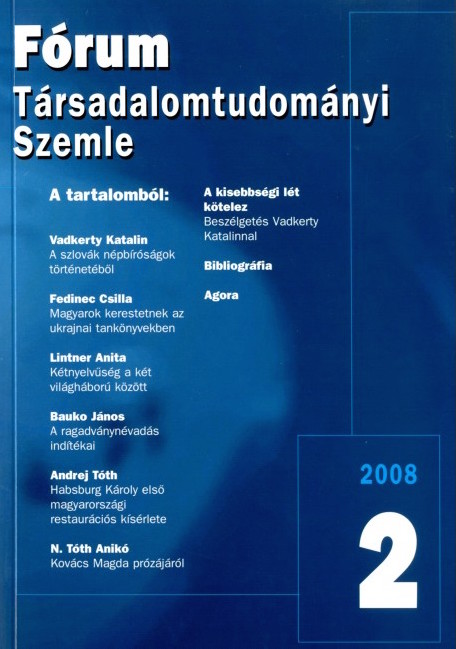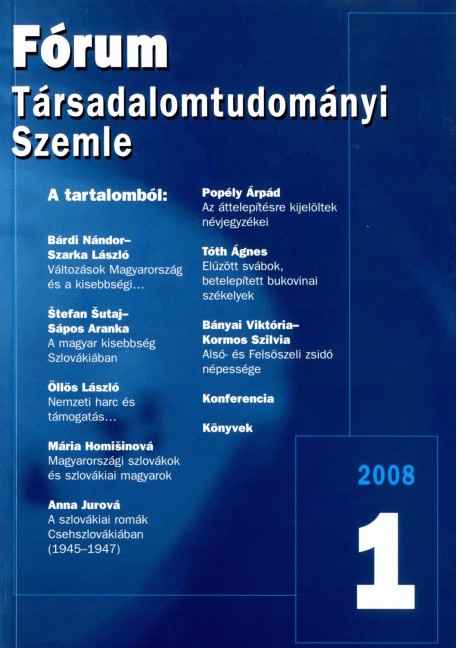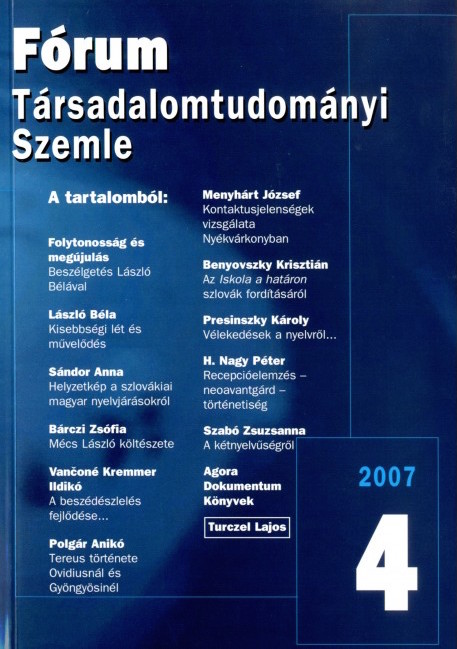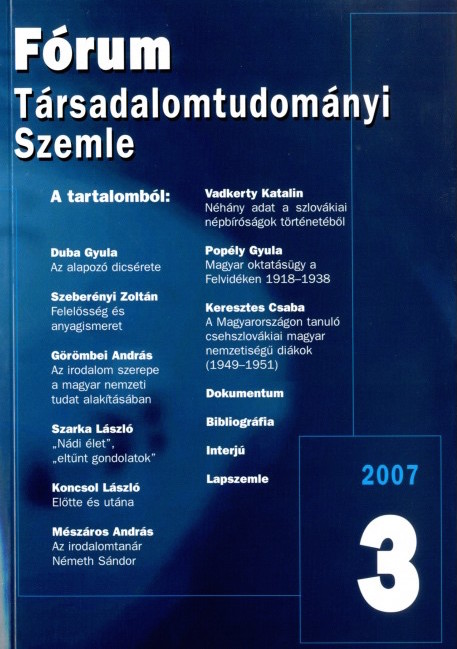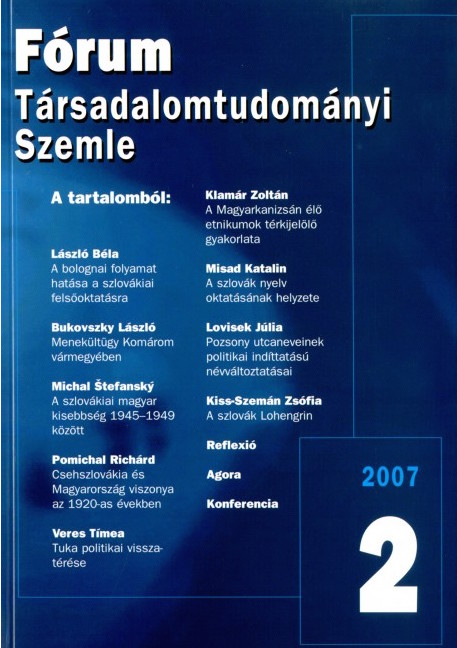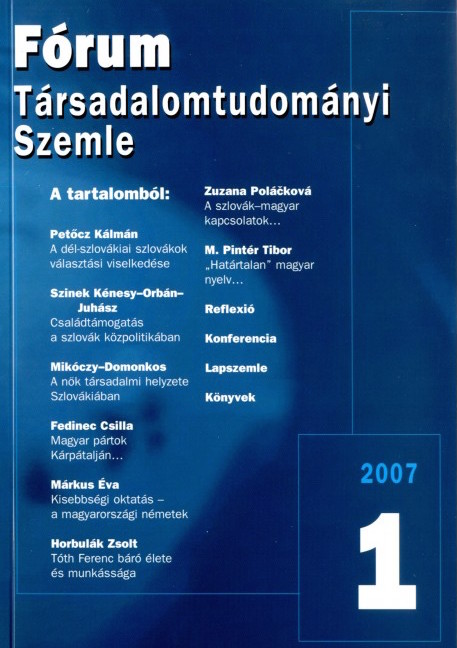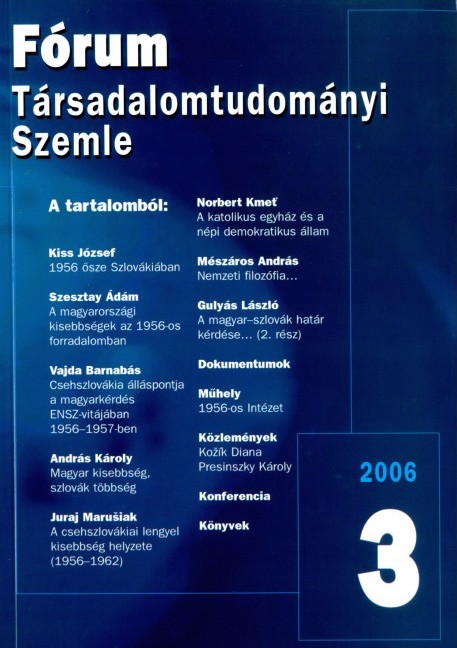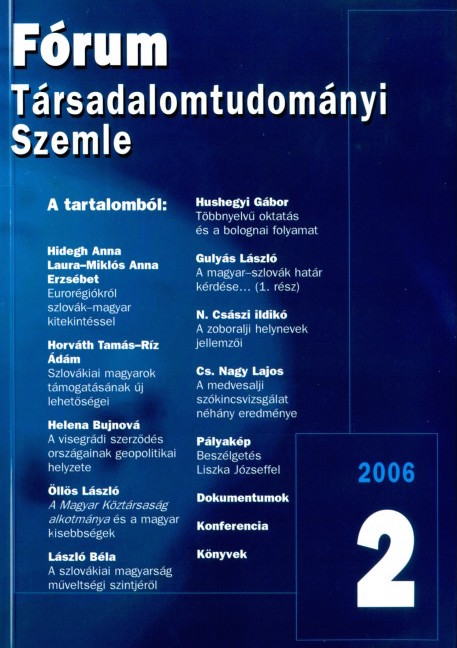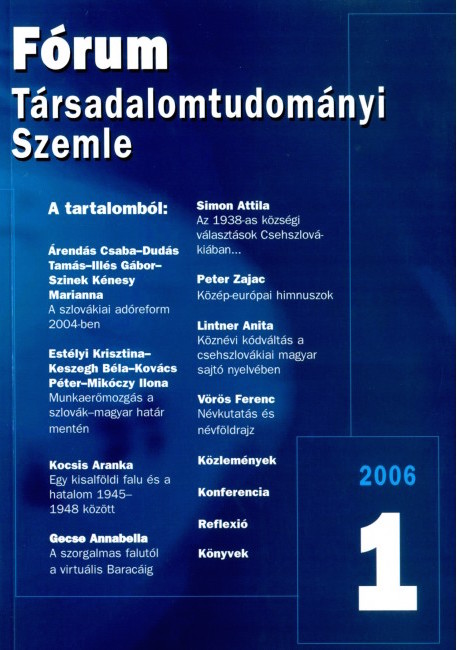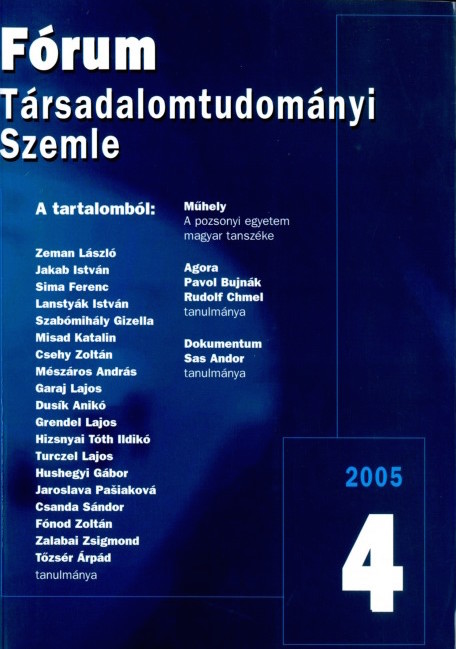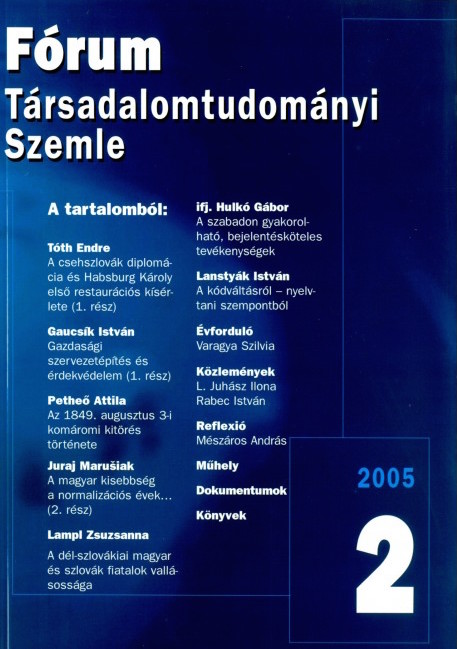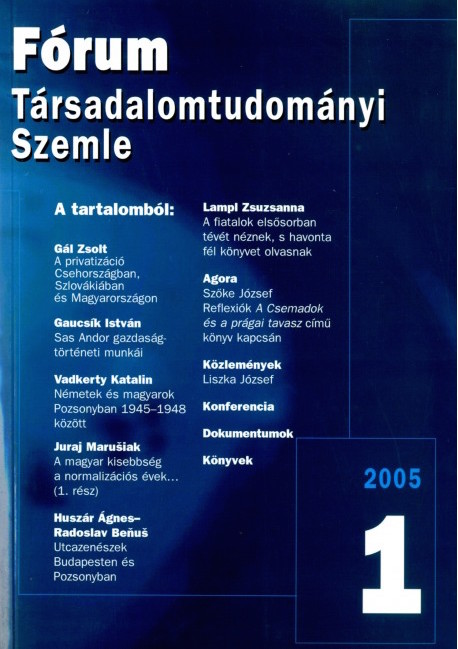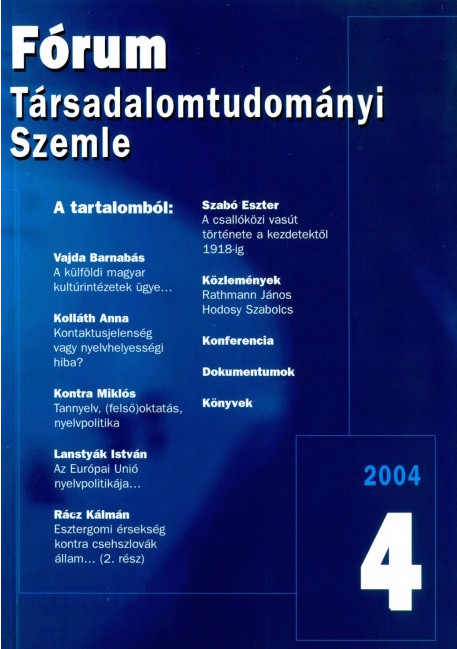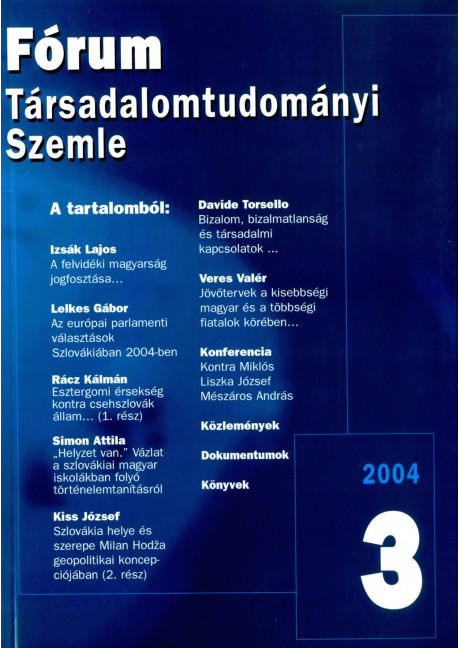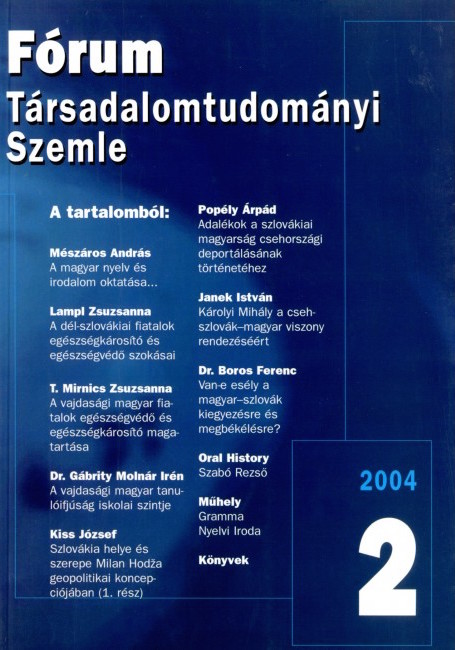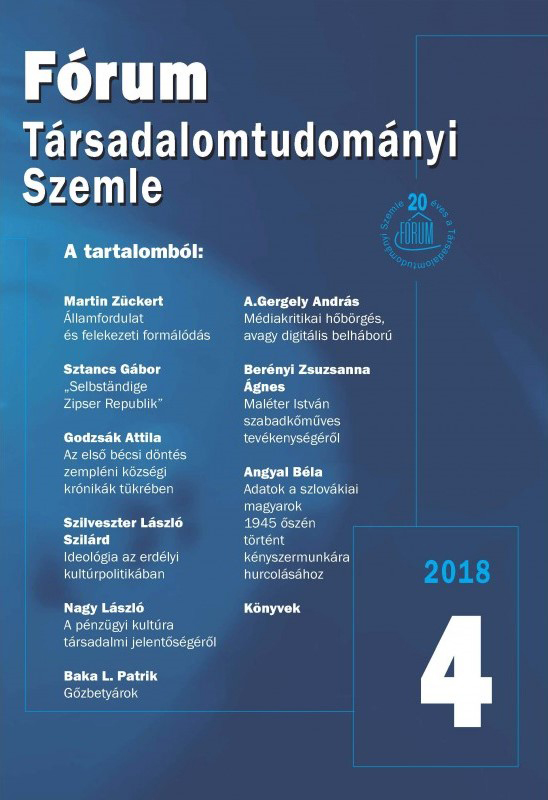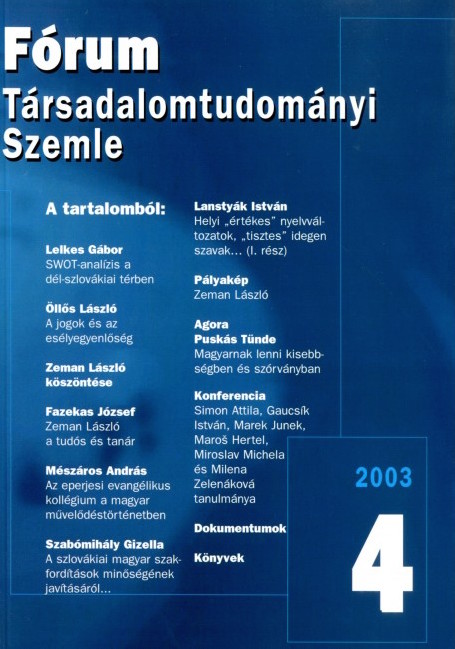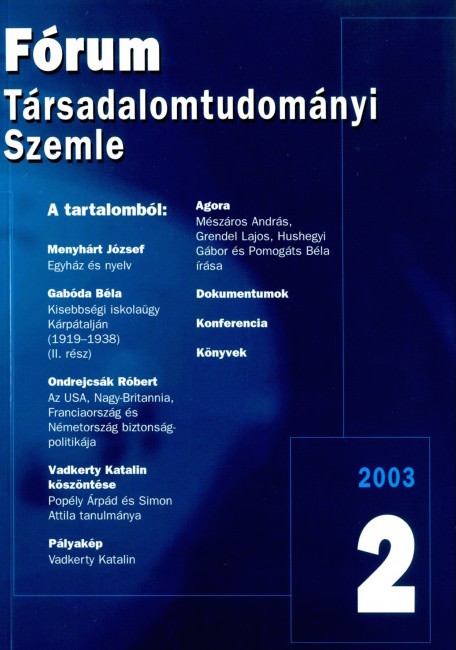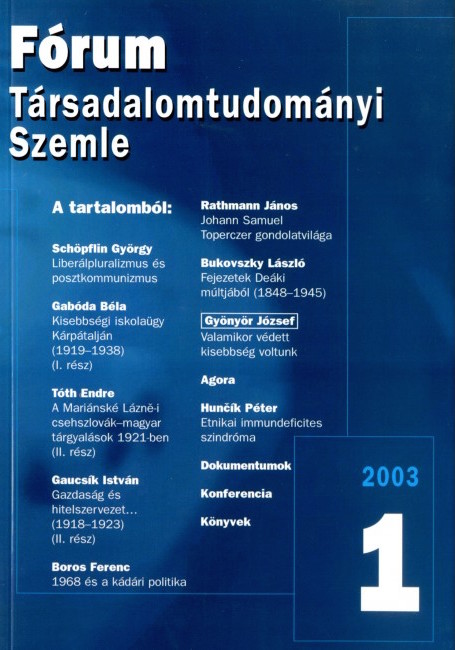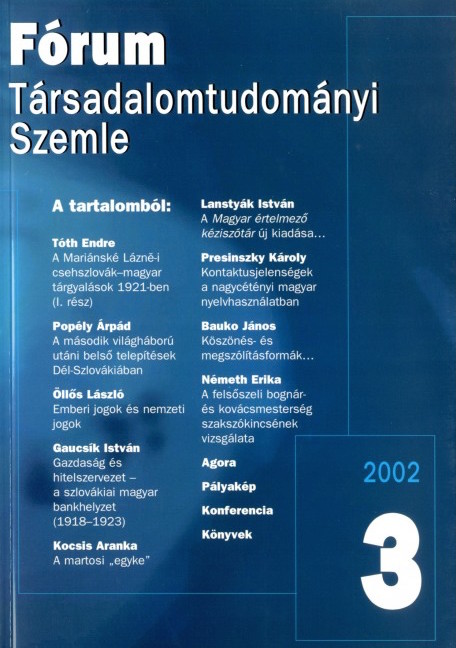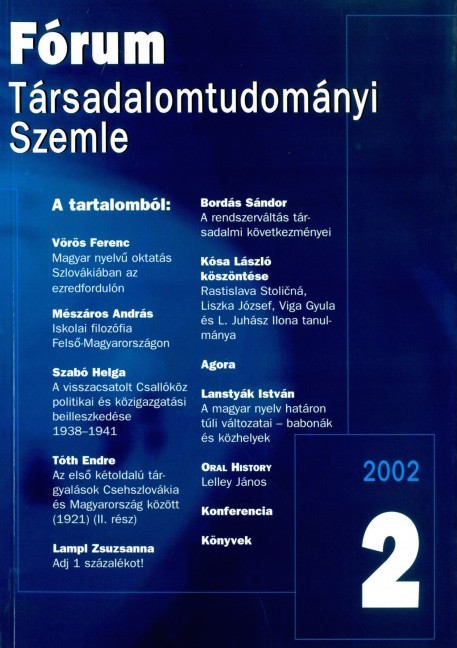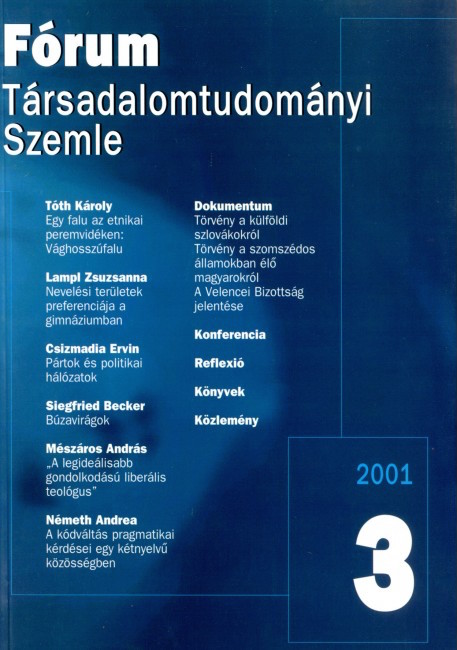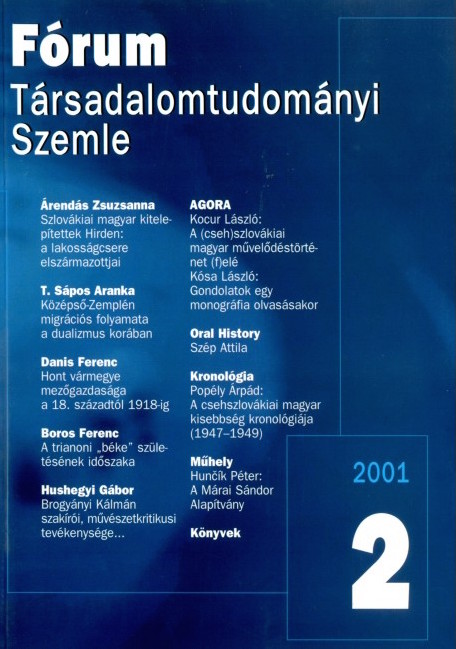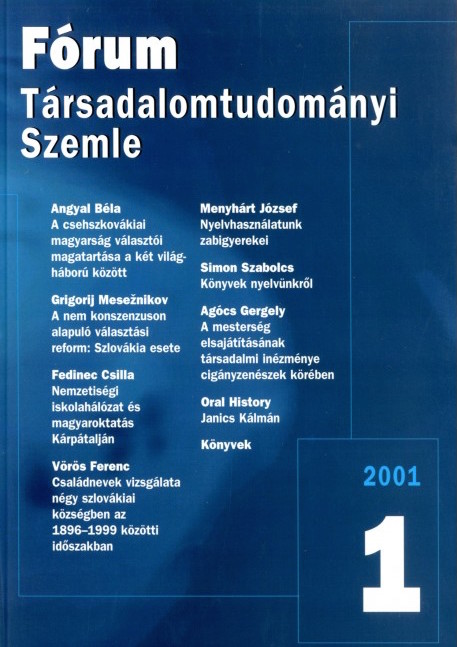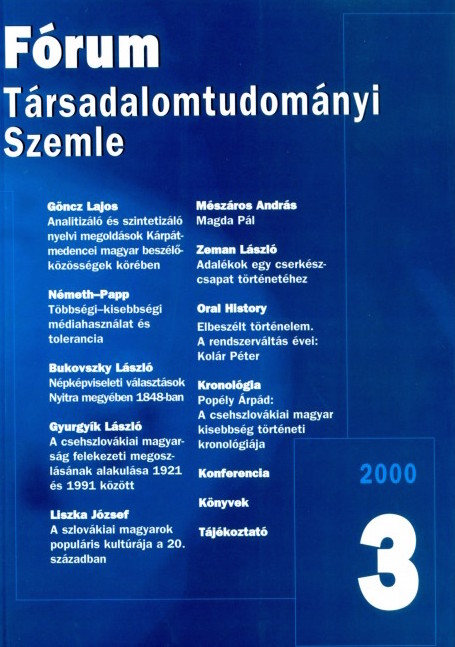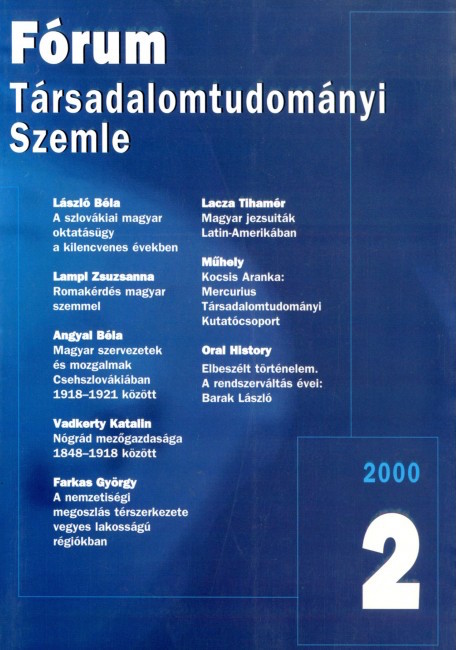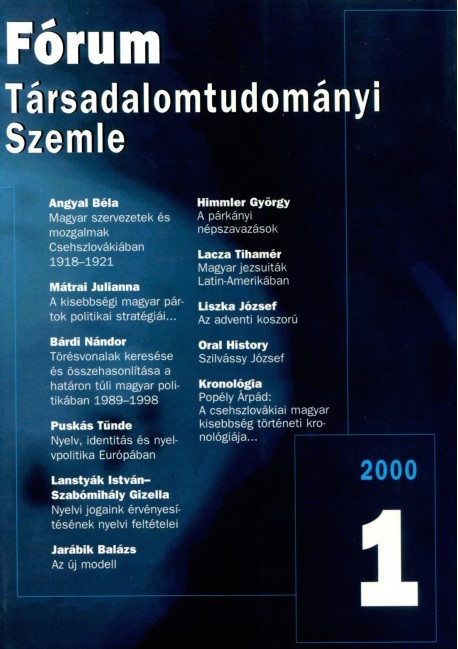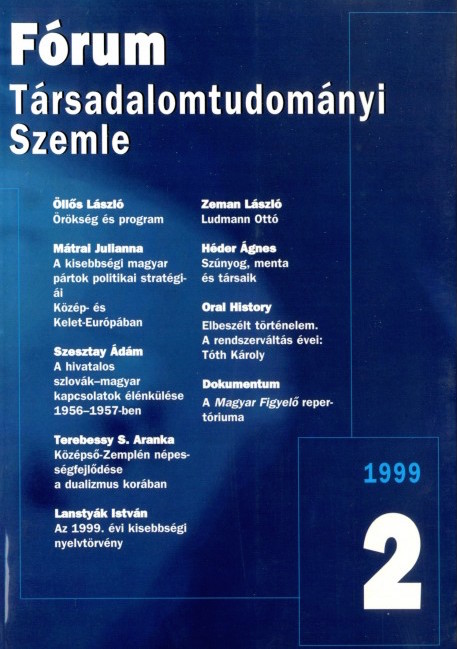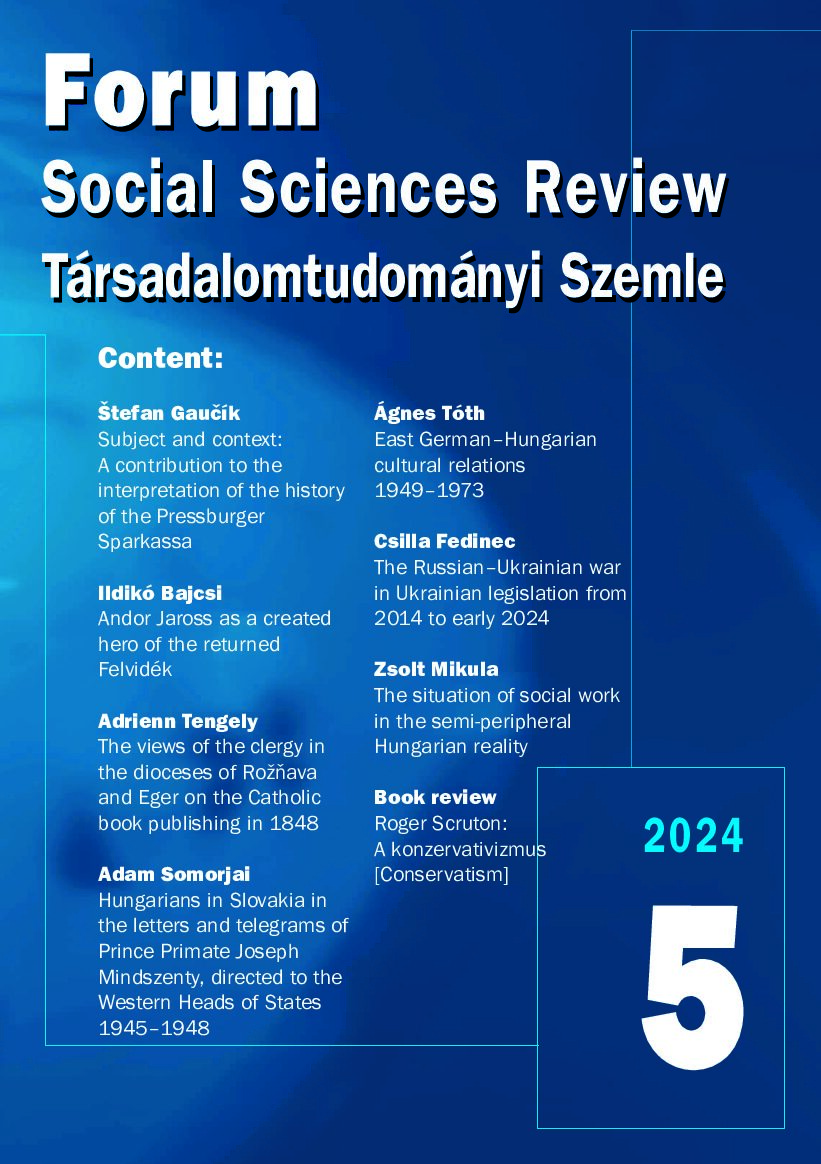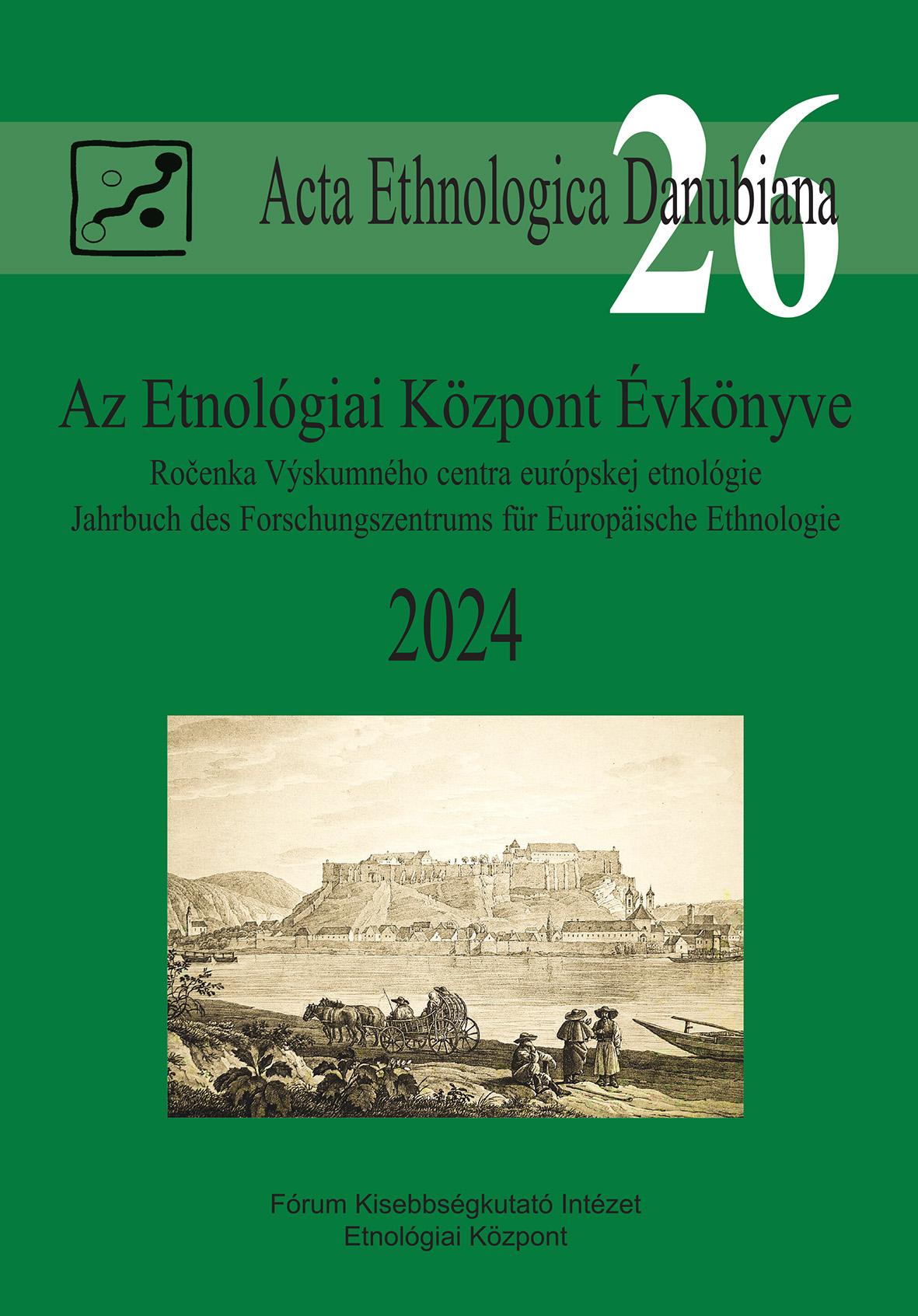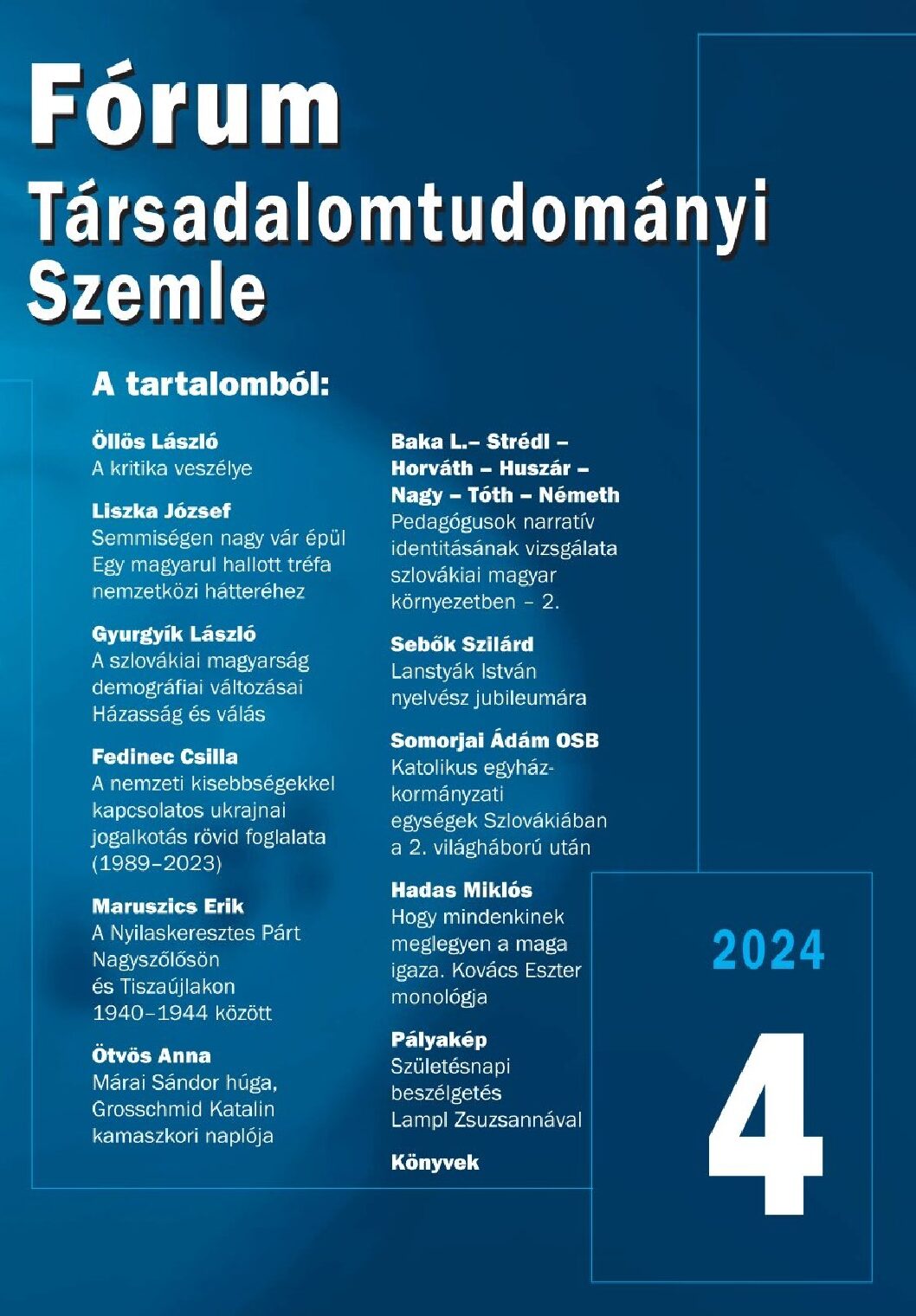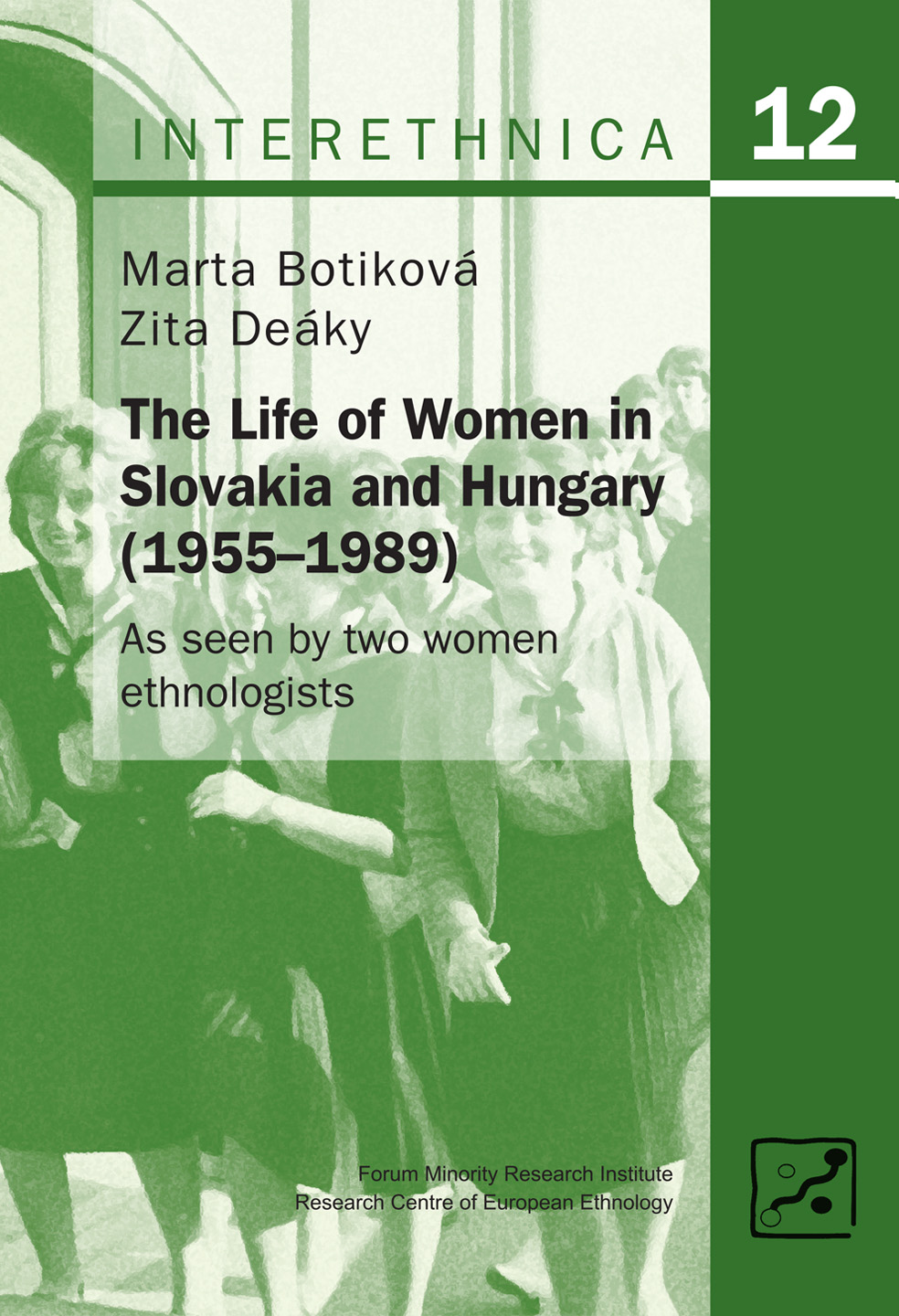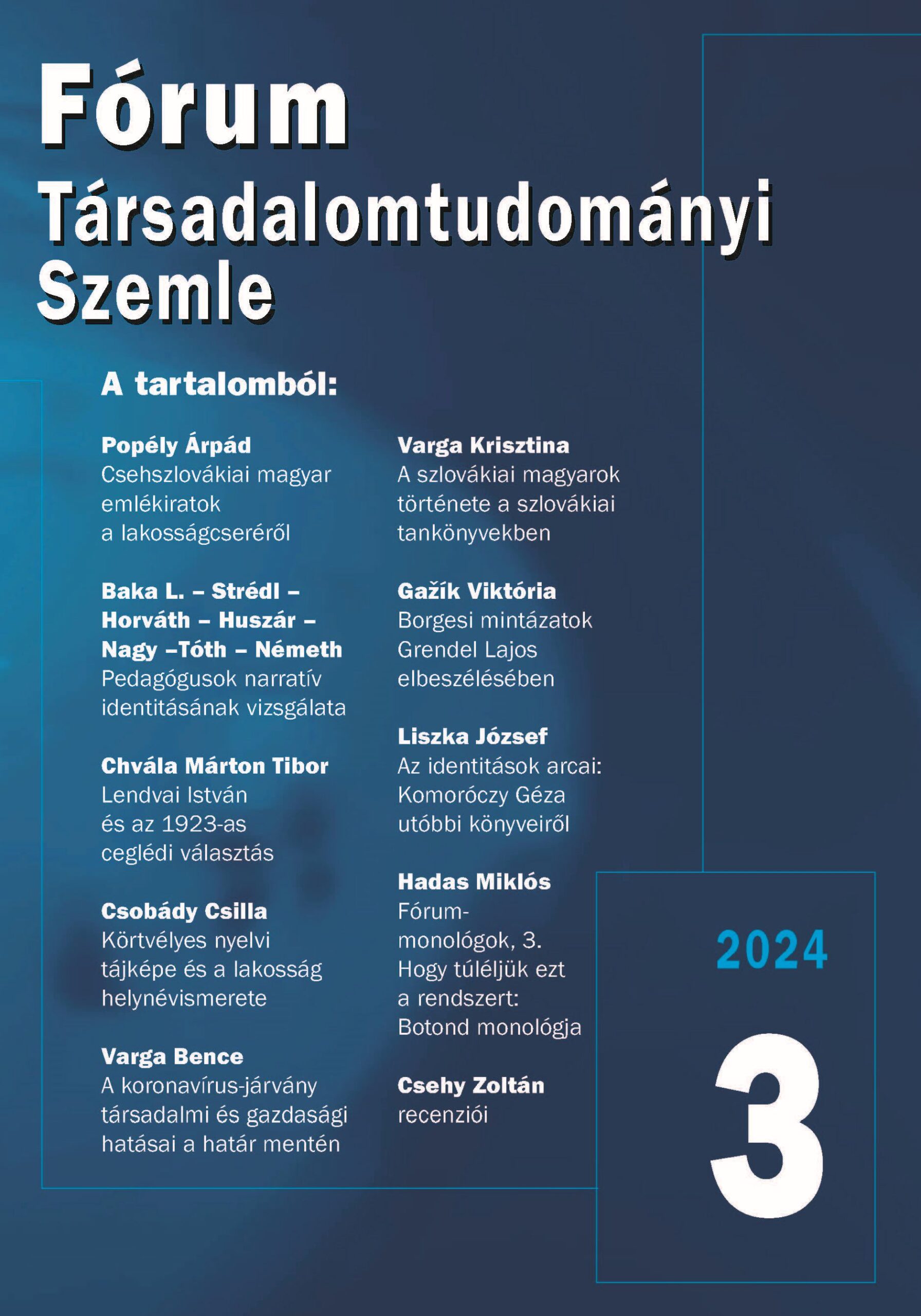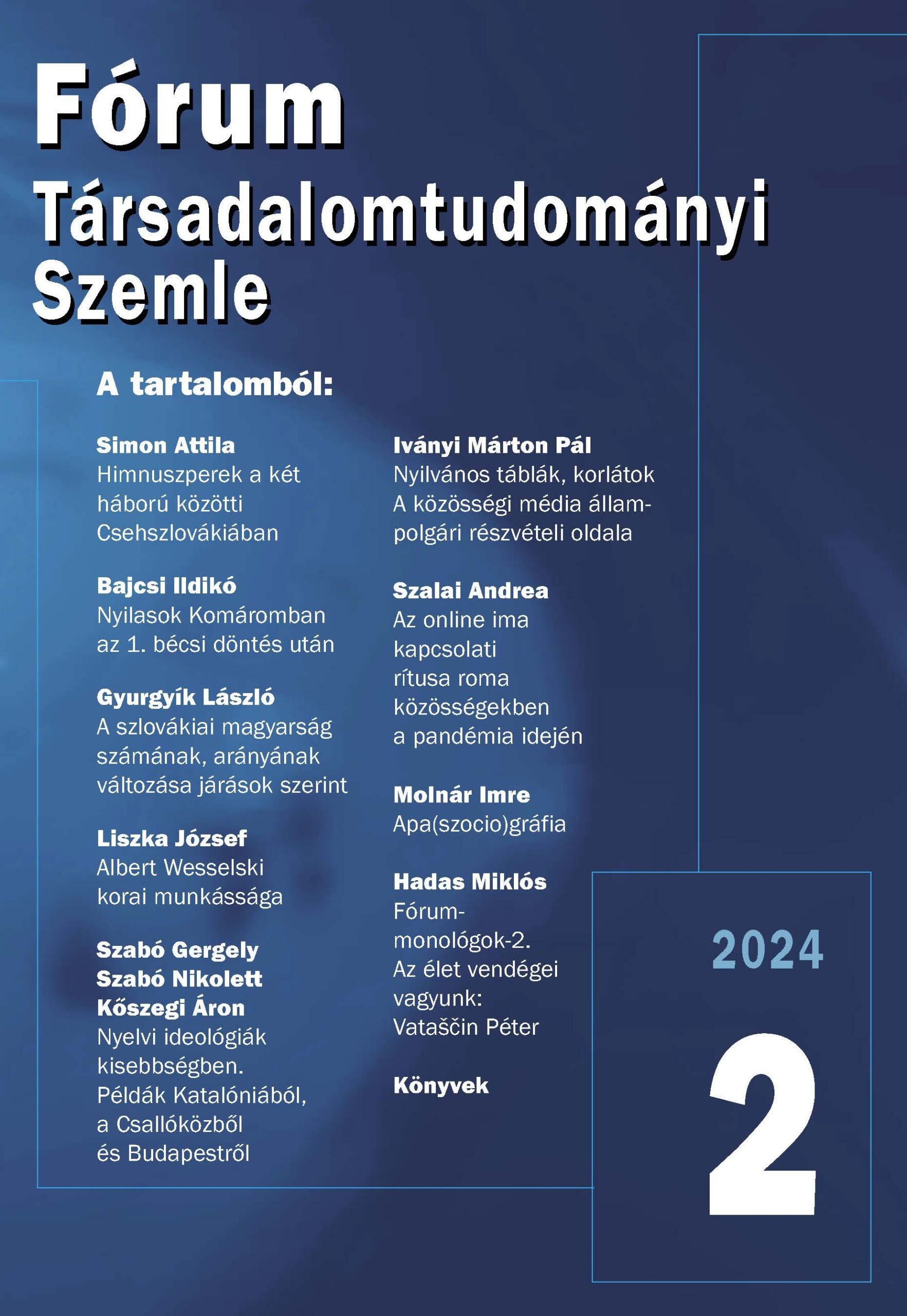András Mészáros: Hungarian Language and Literature Education at the Royal Academy in Bratislava and at the Lycée in the 19th Centrury
The educational institutions mentioned in the title belonged in the 19th century not only to the most important Upper-Hungary’s schools, but they had also an important place in the cultural history of Hungary. Although, their role was not identical during the entire century. The Royal Academy was at the forefront of higher education in Hungary at the first part of the century, and then from 1875 (when the philosophical faculty was re-established), and the Evangelic Lycée was leading to the last third part of the century (when the theological academy was separated from it). Although in both institutions the teaching of Hungarian language and literature was present on different levels, with different emphasis, and in different role of chronology. The study deals with its history and contentual components.
It is a fact that the academies were found by the Ratio Educationis at the end of the 18th century at the seat of study districts. In Upper-Hungary in two places: Bratislava (Pozsony) and Košice (Kassa). In Kassa the precedence of higher education were already present, since the two faculties (philosophy and theology) of the Jesuit University operated there before, although in Pozsony only the Evangelic lycée had the character of a college (since theology was also taught there). Originally, Nagyszombat was given the academy as a compensation for the lost university (that was moved to Buda), but in 1784 this institution was moved to Pozsony. (Let me mention that at the same time the national seminary was moved to the castle in Pozsony, which operated here just for a short time, because soon competence related conflicts arose between the theological faculty of the Buda University and the Pest seminary. Later the national seminaries were wound up, and priest teaching, beside theology training on university level, was moved to archbishop and bishops seats.). The functioning of the academy in Pozsony – except for the attempt to terminate its operation in 1803 – was undisturbed to the suppression of the .war of independence.
From the above-mentioned it is evident that the teaching of Hungarian language and literature did not mean the spreading of the Hungarian language at the academy. József II’s effort to germanise was of short life, after which Latin returned and was the official language to the 40’s of the19’th century. The total elimination of Latin as teaching language was accomplished in 1848. After this between 1850 and 1860 there was a period when German, and not Hungarian was the teaching language of the academy.
If the authors mentioned in the study should be included in a development history, then it would be very simple. Leaving out only those who deal with language teaching, we can take the history of writing Hungarian literature history as a basis for comparison. The beginning is the traditional genre of „historia litteraria”, of which most known representative of the 18th century is Wallaszky followed by Belnay. After Wallaszky a change in view commences, of which Samuel Pápay’s work is the first example. Pápay’s paper, that he intended to be a textbook, originally tried to ease the teaching of the Hungarian language and to inspire studying literature (Badics 1897:1–5). In fact, this is the idea of Georch, Cselkó, and Ferenczy with different emphasis and solutions. Georch “only” gives an example with a literary work, but Cselko makes a selection, and Ferenczy writes his literature history to Petőfi. We know that Toldy used Ferenczy’s work in his summary. There is a change to the national attitude in the case of Cselko and Ferenczy that is later represented by Németh and Lehr. The so-called national classicism and the Beöthy’s positivistic literature history attitude is represented by Hoffmann, Albert, and Vutkovich. Consequently we can state that the teachers of both higher education institutions were up-to-date, i.e. followed the development of writing literature history of Hungary and were its faithful representatives.
Zsuzsanna Lampl: Health-damaging and Health-protective Practices of the Hungarian and Slovak Youth in Southern Slovakia
The history of humankind can be understood as the process of gaining victory over disease. Unfortunately, we can consider only relative victory, since parallel with the development of society newer diseases, “patterns of diseases” appeared. While in developing countries still the former patterns of diseases are ruling, in all developed societies the civilization diseases are rapidly spreading. This process is characteristic for Eastern European countries, that is for Slovakia, too.
The study examines the behavior factors, more concretely smoking, alcohol and drug consumption, and physical exercise. The target group of the examination was the Hungarian and Slovak youth between 15 and 29 years of age on the territory of Slovakia lived by Hungarians, who were addressed during the international youth research titled Mozaik 2001. The sample consisted of 1000 Hungarian nationality and 500 Slovak nationality young people.
Except for characterizing smoking, alcohol and drug consumption, and sporting practices of the target group the author was curious whether any significant differences can be proven between the behavior of men and women, and/or Hungarians and Slovaks. The results showed that health-damaging behavior of men is more characterized for men than for women. Men smoke, consume alcohol and drugs more than women – although, they are also more engaged in sports. These results agree with statistics characterized also for the country and for the Southern Slovak region that stress the worse health condition and higher mortality caused by civilization diseases of men. At the same time, the results also show the behavior factors that mainly result the development of civilization diseases, and that smoking and alcohol consumption of Hungarians, and mainly Hungarian men practice a more health-damaging behavior than Slovaks. It can be presumed that mortality over average caused by malignant tumors experienced in territories lived by Hungarians in the last period can become a nationality-specific phenomenon in the future (although, it is possible that it is now). Stronger emphasis should be set on primary prevention of Hungarians living in Slovakia.
Zsuzsanna T. Mirnics: Health-protective and Health-damaging Practices of the Voivode Hungarian Youth
From the research results it is evident that the recent health condition of voivode Hungarian youth can cause many long-term dangers in the future; forms of self-damaging behavior used as stress reducers is a problem of the society. Health-protective behavior and sporting is less general, in case of older people it has less value, people have indifferent and negative attitude to it.
The impact of demographic factors is evident; family background, higher education, and career opportunity of making business that give security and protection against damaging addictions. Friends and entertainment opportunities make drugs in the world of the youth more accepted, “more fashionable”, more usual.
The modern forms of healthy lifestyle propaganda in the Voivode have been pushed into the background for a long time, since they are considered “elite” in the state of poverty. Good health condition depends not mainly on finances, but on individual and communal view of life, life philosophy, and belief.
After the ten-year war period the economic crisis, that have been reduced only partially, will presumably not stop in a short time, therefore the disappearance of pressures vented in forms of health-damaging can not be expected in a short time. Rapid spreading of drugs effects mainly very young people, between 15 and 19 years of age, who try drugs at such young age. The age group from 20 to 24 is also effected. The fact that from them the students are the aims of drug dealing, shows that youth organizations, groups of students, university and college teachers can do a lot for changing the situation.
Recent results set further research goals as reason exploration and understanding; and within the framework of prevention they stress traditional information giving, community forming, individual and group advisory, the importance of psychological activities, and the creation of the opportunity of meaningful work and study and the restoration of their values.
Dr. Irén Gábrity Molnár: The Educational Level of the Vajda-Hungarian Students, as the Condition of the Substitution of the Hungarian Intelligentsia
The Vajda-Hungarians’ participation in education lags behind the majority nation. This lagging behind results unschooling/illiteracy of Hungarians and decline of the intelligentsia. The rate of Vajda-Hungarians to the total number of population is 14 per cent. In comparison with this the youth in the particular age-groups and school levels, they log behind the majority population. According to it, the level of education of Hungarians decreases in comparison with the majority population, therefore the chances for finding jobs are also lower, since if the number of specialists and intelligentsia is getting lower, the labour market unmercifully selects them.
We cannot be satisfied with the division of Hungarian students by educational language, because if 20 per cent of them starts primary school level in Serbian language, then 60-70 per cent of them cannot take examination in their mother language on higher education level, and then the number of specialists learning in Hungarian decreases. Moreover, these young people – in their identity consciousness (Hungarian language culture, comprehensive knowledge of our history) have fewer chances to remain to be members of the Hungarian intelligentsia and to be active in their mother– Hungarian language.
The chosen high school „canalises” the young people, either for further education, creative work, or executive work, work requiring medium-level skills. Only 19,68 per cent of Hungarian high-school students attend grammar schools, 39,46 per cent attend four-year vocational secondary schools, 39,25 per cent attend three-year vocational secondary schools, 0,67 per cent attend two-year vocational secondary schools and 0,92 per cent attend vocational secondary schools for arts. The aim of talent fostering grammar-schools opened in 2003 is to promote elite-training of Hungarians, and to hinder moving talents abroad after the primary school.
It is clear from the empirical data that the determining majority of young people wants to study, and acquire practical knowledge in their mother language. Data, according to which the Hungarians like choosing fields that are taught in Hungarian (e.g. pedagogy), and technological and economical education, also confirm this. Although, Hungarian-speaking high-school teachers, doctors, bankers, managers, psychologists, sociologists; generally speaking, the intelligentsia in humanities, are lacking.
The Vajda scientific intelligentsia and its work need to be raised to such European level that joins it to the life of international academy at any time. All that is needed to realise this is to build a network of Hungarian higher education institutions – either within the existing state system, or following the Act on Higher Education that should be in effect at the beginning of 2004 – to establish a new university or Hungarian sections.
József Kiss: Slovakia’s Place and Role in Milan Hodža’s Geopolitical Concepcion (1. part)
The study’s starting point is Milan Hodža’s geopolitical conception that was accomplished in 1931 – by defining the territory between Germany and Russia from geographical, economic, civilisational and power point of view. Hodža’s conception became the subject of political analyses at the beginning of the 90’s, but as a certain result of his geopolitical ideas. His views gradually crystallized that had its historical grading. This study intends to capture some of the components of Hodža’s conception, to follow its development, and to illustrate its socio-political circumstances from historical point of view – according to Hodža’s writings.
The reason for examining Hodža’s geopolitical thinking is that his conceptions, which he considered to have geopolitical context, are connected with Middle European importance mainly from the point of view of Slovakia and the Czech Republic. That proposition was emphasised that the geopolitical basis of having this role was Slovakia – from the communicational function of the Duna river’s flowing – was in fact in harmony with the Czechoslovak arguments during the creation of the borders of the new country. And these were accepted political and publicistical changes between the two world wars in Czechoslovakia. Alhtough, in the case of Milan Hodža, they were always present in such connection where internal policy motives interwaved with international relations. Consequently, the thesis by Milan Hodža gained real conception creating dimension by mixing into the chain of ideas touching Czech-Slovak relationships. The study analyses: in what extent dis Hodža’s argumentation have geopolitical criteria, and how did his analyses gain characteristic features of real geopolitical conceptions.
Hodža looked for Slovakia’s place in connection with the intermediating mission between West and East of Middle Europe – between the coordinates of comprehensive geopolitical conceptions that were present in his lectures and articles in the summer of 1931.
(A tanulmány befejező részét következő számunkban közöljük.)
Árpád Popély: Additions to the History of Deportations of Hungarians Living in Slovakia to the Czech Country
Leaders of the re-newed Czechoslovakia at the end of the Second World War who aimed to build a Slavic national state neither during the war, nor at the Potsdam conference were supported by the winning great powers to deport the Hungarians. Consequently, they struggled to get rid of Hungarians living in Slovakia by the population exchange that was forced to Hungary, and parallel with it by the so-called re-slovakization.
The deportation that started in November 1946 was processed with the help of the great powers. The selected territory was surrounded by military units, and than curfew was imposed and public assembly forbidden. According to the name list that was prepared in advance, the selected families delivered orders for working in the Czech country, and the list of objects, foodstuff, and animals that they were allowed to take with themselves. Reception and separation of deported people – according to the testimonies – resembled slave markets. The deported persons had to wait in the unheated wagons at the railway-station or neighboring buildings until one of the Czech farmers who were interested in Hungarian labor force selected them.
According to the official Czechoslovak reports, during the deportations that lasted more than three months 9 610 families were deported to the Czech and Moravian country from 393 villages of 17 districts, that is 41 666 persons. Their houses and lands were given to Slovak families who settled there.
The vast majority of deported persons, i.e. almost 90% – partially in 1947—48 without permission, partially at the beginning of 1949 in organized form – returned to their native country. The settlement of the Hungarians living in Slovakia to the Czech country that was planned to be definite, with the other big deportation action and in contrast with the population exchange, had no lasting consequence and the deportations could not become the tools of changing the ethnic proportion of Southern Slovakia. Testimonies evidence that in the memory of the history of Hungarian minority living in Slovakia from the triple tragedy of Highland Hungarians after the Second World War – re-settlement to Hungary, re-slovakization, and deportation to the Czech country – because of the threat of expelling them from their native country, and consequently loosing their property and spreading in a foreign language environment, deportations mean the most painful grief up to these days.
István Janek: Mihály Károlyi for the Settlement of the Czechoslovak–Hungarian Relationship and Population Exchange Between 1945–48
Mihály Károlyi returned to Hungary on 8th May 1946 after twenty-seven years of emigration. Károlyi is considered to be the most controversial and most colorful person of the Hungarian history. During his career he was the nation’s redeemer and later the nation’s traitor. Many people blamed him for the Trianon catastrophe. During his life, he was an emigrant two times and he was two times rehabilitated. His second return to his home was possible only after his death in 1962. The study deals with those activities of Mihály Károlyi that he made for the sake of Hungarians living in Czechoslovakia between 1945 and 1948.
From Hungary’s neighbors the worst relationship was that with Czechoslovakia in 1945 that stems from the minority policy of the Czechoslovak government, persecution of Highland Hungarians. According to the government program announced by President Beneš on 5th April 1945 in Košice Hungarians were allowed to be members of neither political nor mass organizations, even civil servants of Hungarian origin were discharged from their positions. Businesses in the ownership of Hungarians were taken by the state. The flats of Hungarians in the cities were expropriated. Part of Hungarians living in cities was interned. In several parts of Slovakia internment camps were set up. Due to the restricting arrangements the Hungarian minority was deprived of health care and pensions. According to the Decree No. 88/1945 the Hungarians could be taken to work by force to the Czech country, where there were vast shortages of labor force due to the leave of Sudeta Germans.
Mihály Károlyi followed the development of the Czechoslovak-Hungarian relationship even during his emigration in London. He could not forgive the Czechoslovak leaders that after the Second World War the Czechoslovak politics did not support the peaceful settlement of East-European situation and the process leading to democratization, and on the contrary, it used such methods on the Hungarian minority that were unknown in Europe before fascism. He did not understand how the authors of laws and orders could expel people living in a mostly ethnically locked Hungarian line for decades from their homes, force them to work, take them to collection camps, and move them to the other side of the border with impunity. To the Hungarian government he also felt disappointment. He resented that he did not become the member of the Hungarian delegation meeting in London and Washington, since he had a larger circle of relationships, and/or he had a better local knowledge. He was angry at the Hungarian government, because when the delegation returned from its tour on the west, they did not address him to inform him about their results. From the side of the Hungarian government it was a tactical mistake, since they know that Beneš invited Károlyi to Prague and that he intended to discuss with him. Károlyi was embarrassed even because his proposal for establishing an office belonging to the Ministry of Foreign Affairs to be led by him, of which goal would had been to promote the co-operation with the neighbors, and to prepare the Duna-confederation, was rejected.
He was rightfully harmed when he was not addressed to be the member of the delegation of the Peace Conference in Paris and that later he could participate on it as an advisor and not as the leader of the delegation. Although, the reason could have been the fact that the Hungarian political leaders did not want to connect Károlyi’s name with the second “bad peace”. In my opinion Károlyi knew this and in spite of this he was ready to use his experience and influence for the sake of achieving peace. Károlyi realized that for Hungary instead of bad automatic response full of prejudice economic and political co-operation with the neighboring countries could also be the way out. His sense of justice is evidenced by the fact that he always spoke against the deportation of Germans living in Hungary and thought that the persecution of Hungarians living in Czechoslovakia was inhuman, and in all of his writings and acts he tried to prevent these acts.
Dr. Boros Ferenc: Is There a Chance for Hungarian-Slovak Conciliation and Reconciliation? (experiments, experiences)
After the system changes such conditions had been created that the two countries and nations could determine their relationship to each other without external influences, considering their national and foreign affair issue interests, setting their bilateral relationships on new basics, overcome the disturbing and existing factors that had been historically formed, submit their relationships in the European integration process to the interests of a mutual future. The study examines such attempts and efforts, with a special emphasis on clarifying past issues, since it had been proven that historical traumas and stereotypes arose after the system changes period, and strongly influenced common knowledge and the relationships of both nations and countries.
From the study it is evident that considering the Hungarian-Slovak history, on political level but also on society scale the question of conciliation and reconciliation arose again and again. Its importance has become more up-to-date in connection with joining the EU and while preparing for co-operation within Europe. It would be a pity to give up the attempt that is oriented on its promotion on Parliamentary level.
If we consider the above-mentioned four questions „interpreted in a confrontative way” (historical prejudice, border issue, issue of the national minority, issue of the power plant) as a basis that influenced the relationships of both nations and countries during the pas decade, then in the majority of cases we can experience positive changes.
The improvement of relationships and co-operation of both countries mainly in the last election cycles indisputably reduced prejudice. Way of making politics of Hungarians living in Slovakia contributed to this in a great extent, but also their reassuring civic behavior and the strengthening their role and authority in the society.
The artificially created border phobia could not be the real reason for making the tension. Mainly in the last years there were positive steps taken (agreement on the issue of Law on Advantages, the issue of the University in Komarno) for the sake of a reassuring, acceptable solution of the national minority issue. The situation and general feeling, self-confidence has substantially been improved.
However, there are tasks to be done on both sides in the field of ensuring conditions preserving identity in connection with curing the unfavorable tendencies influencing the future of nationality minorities.



